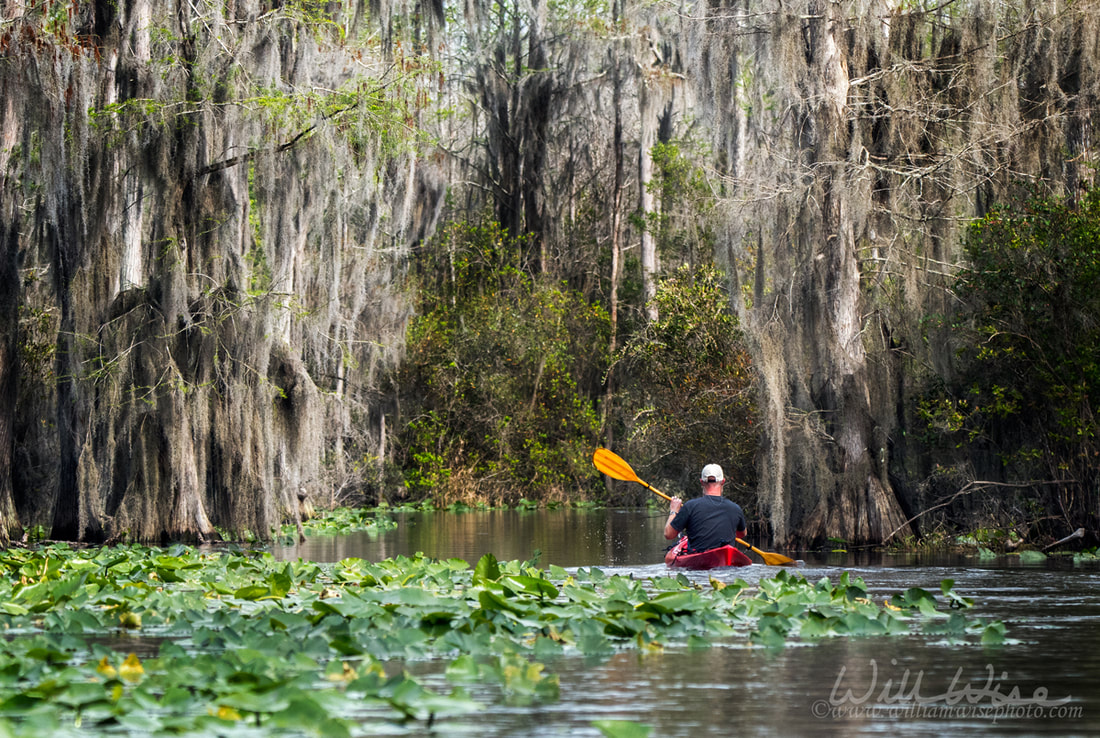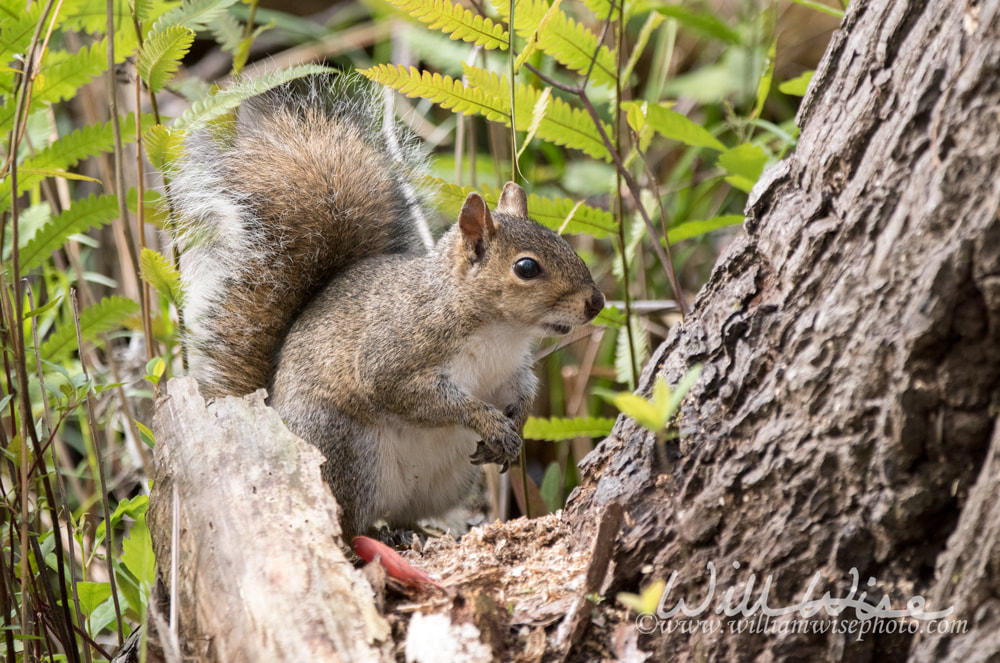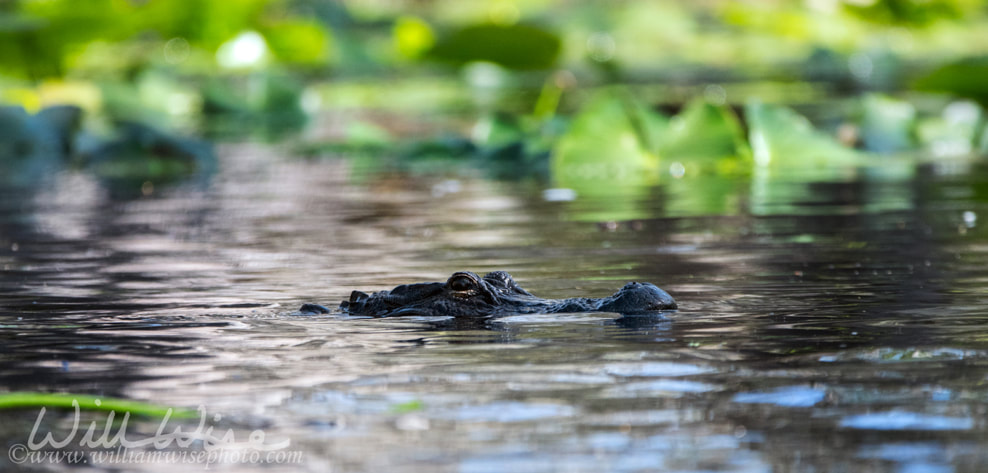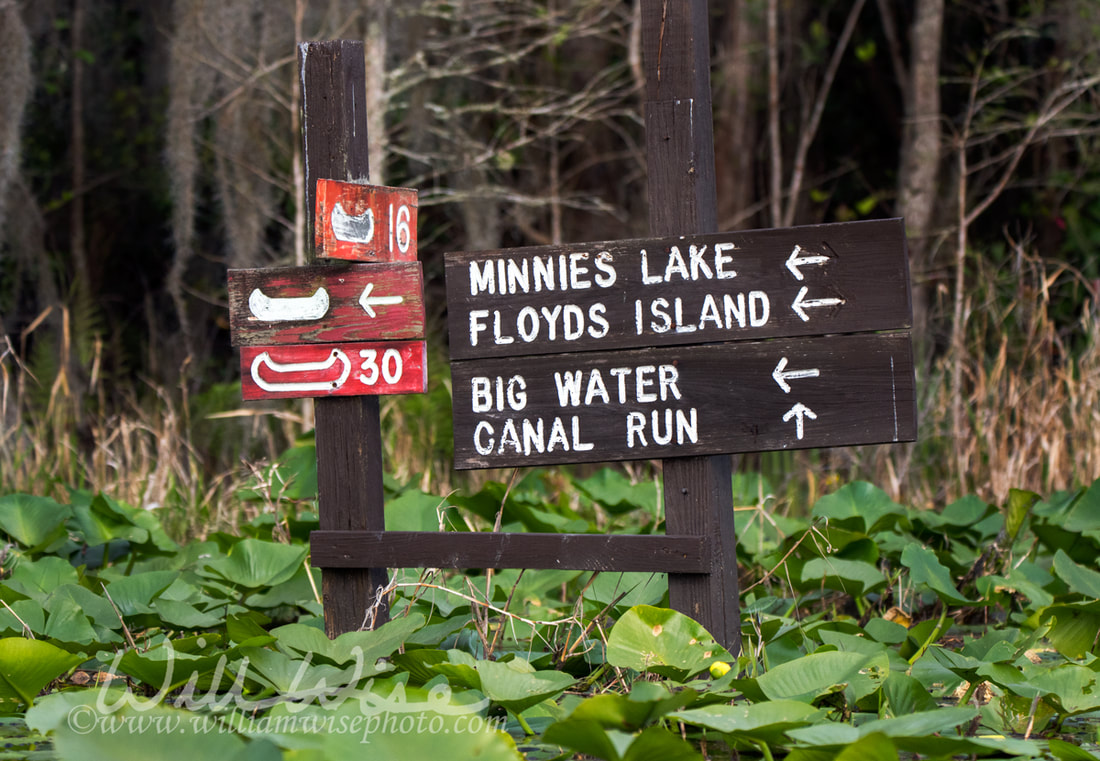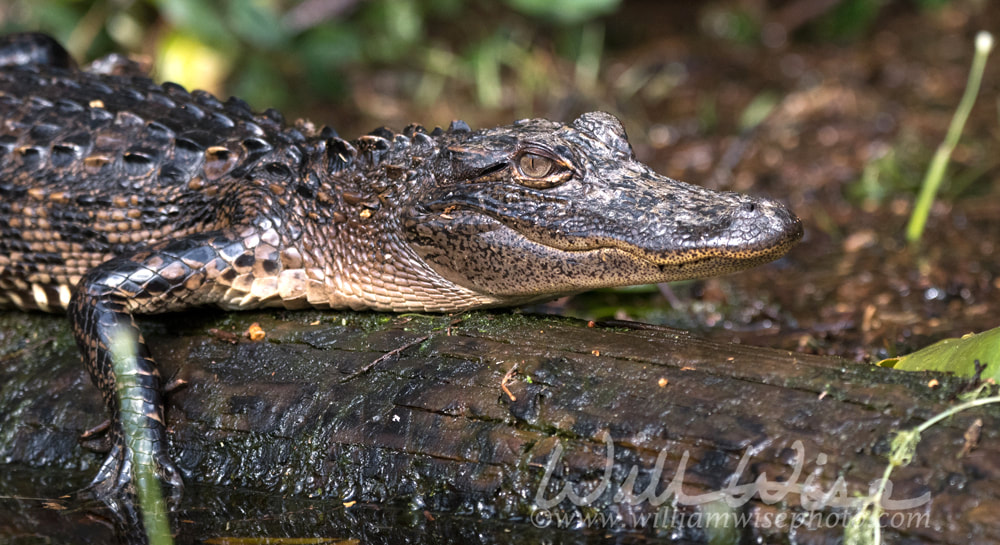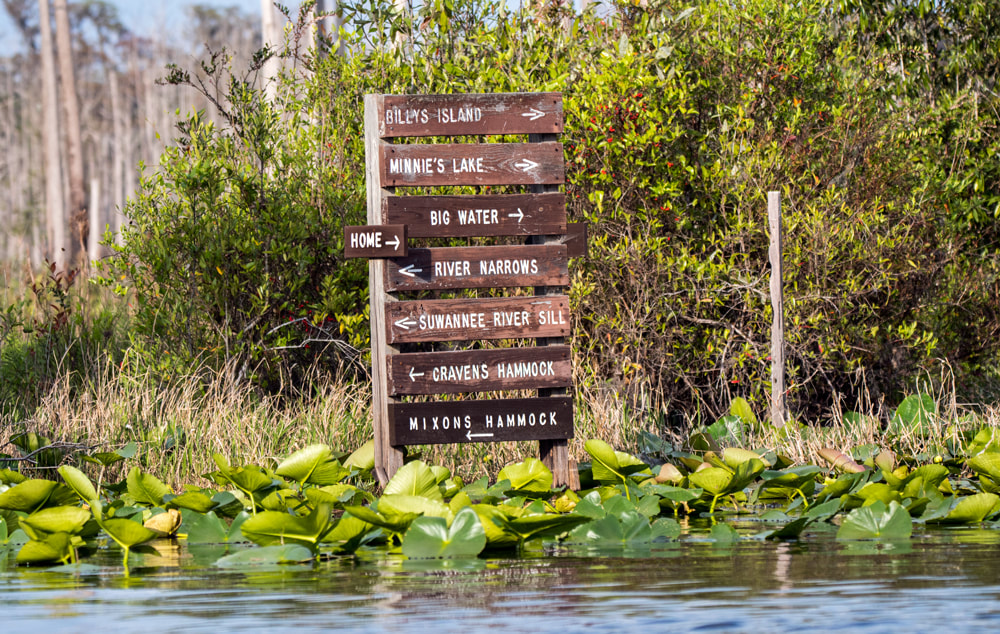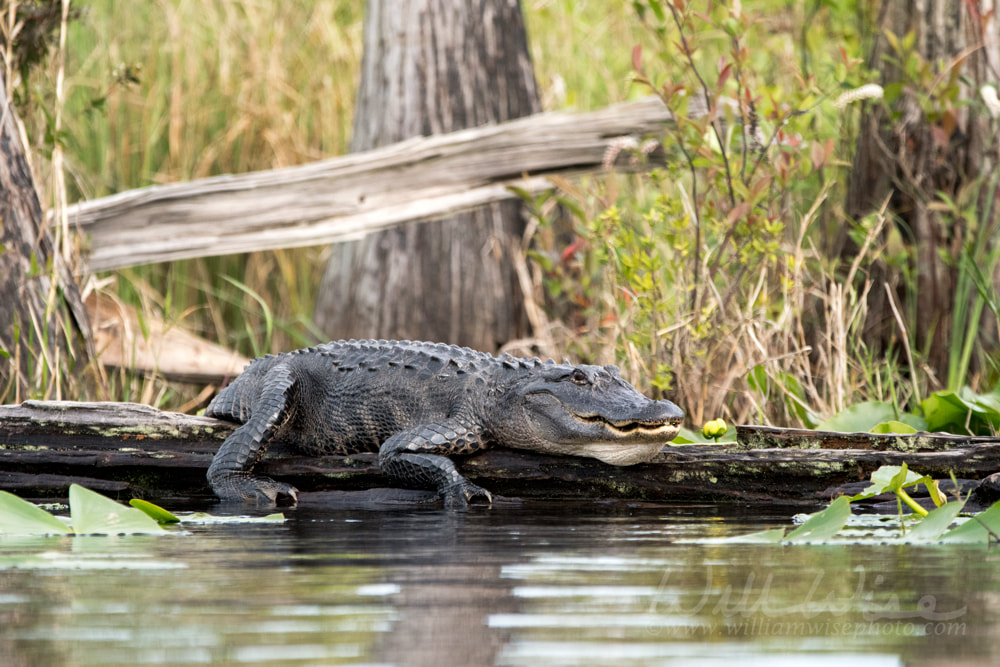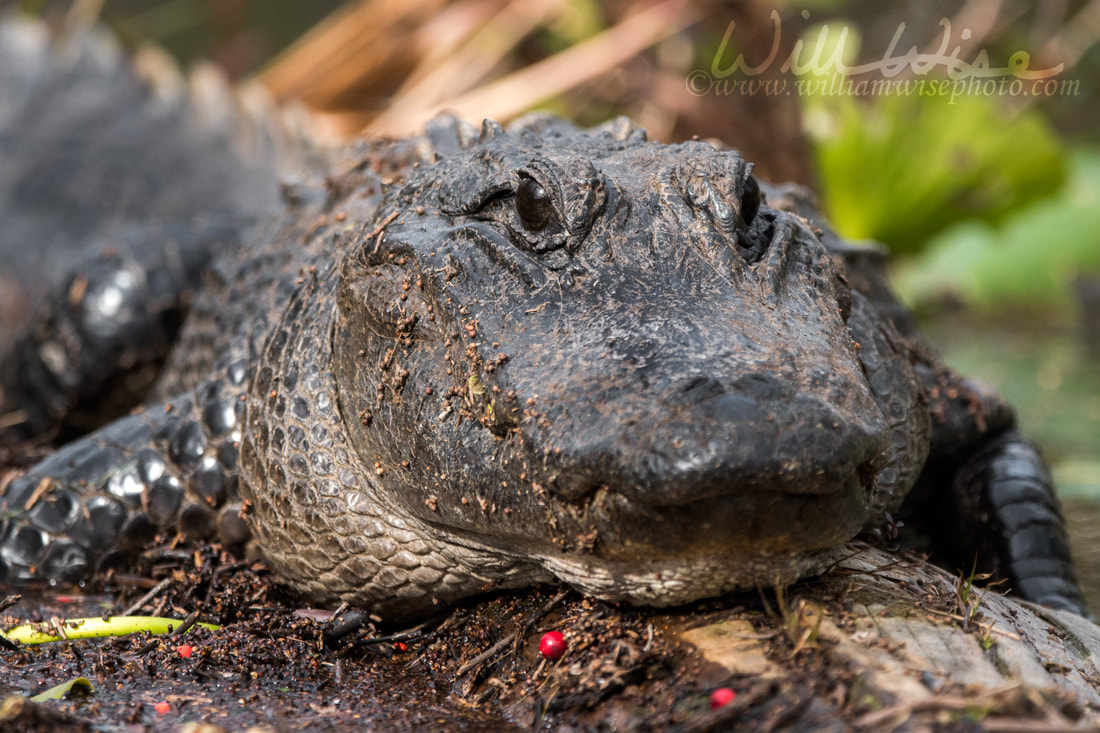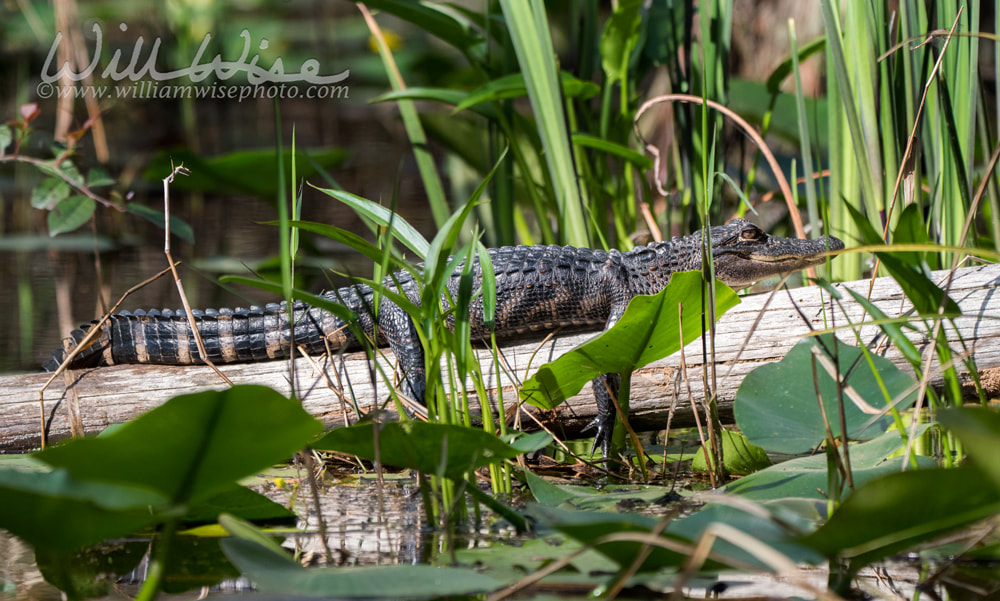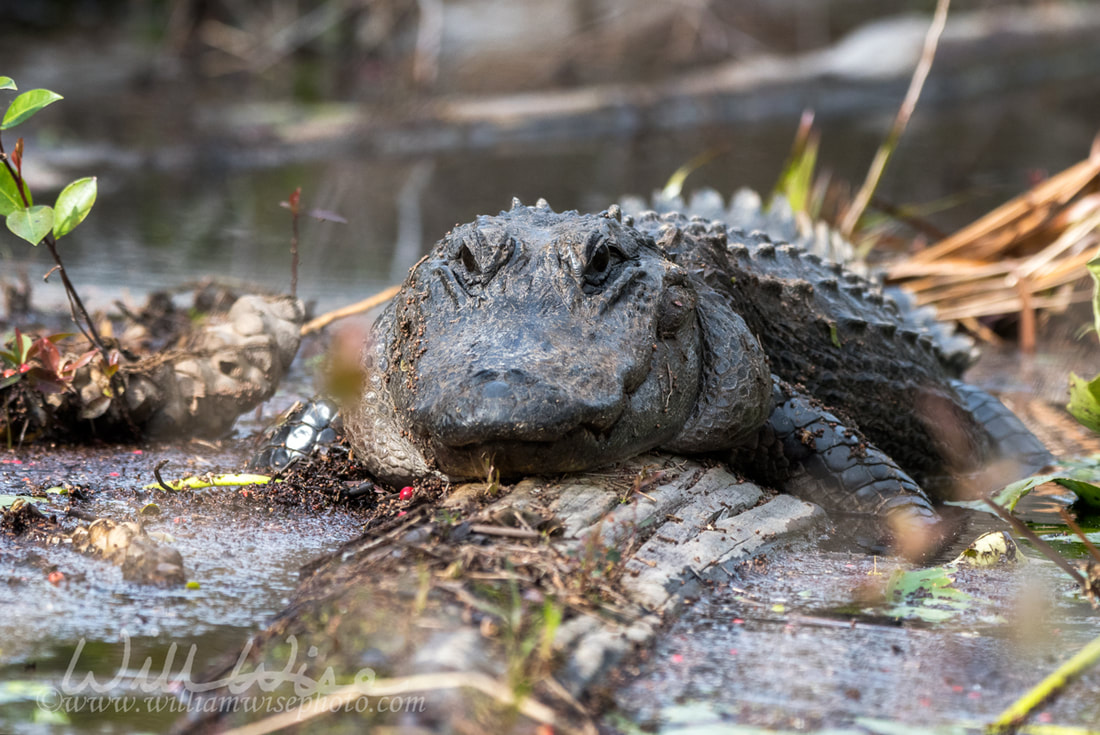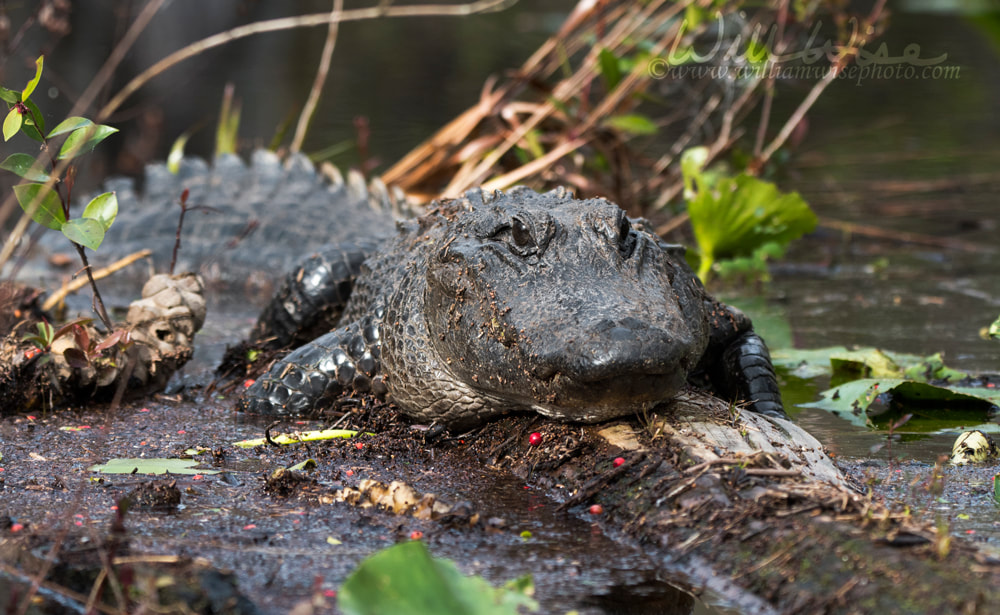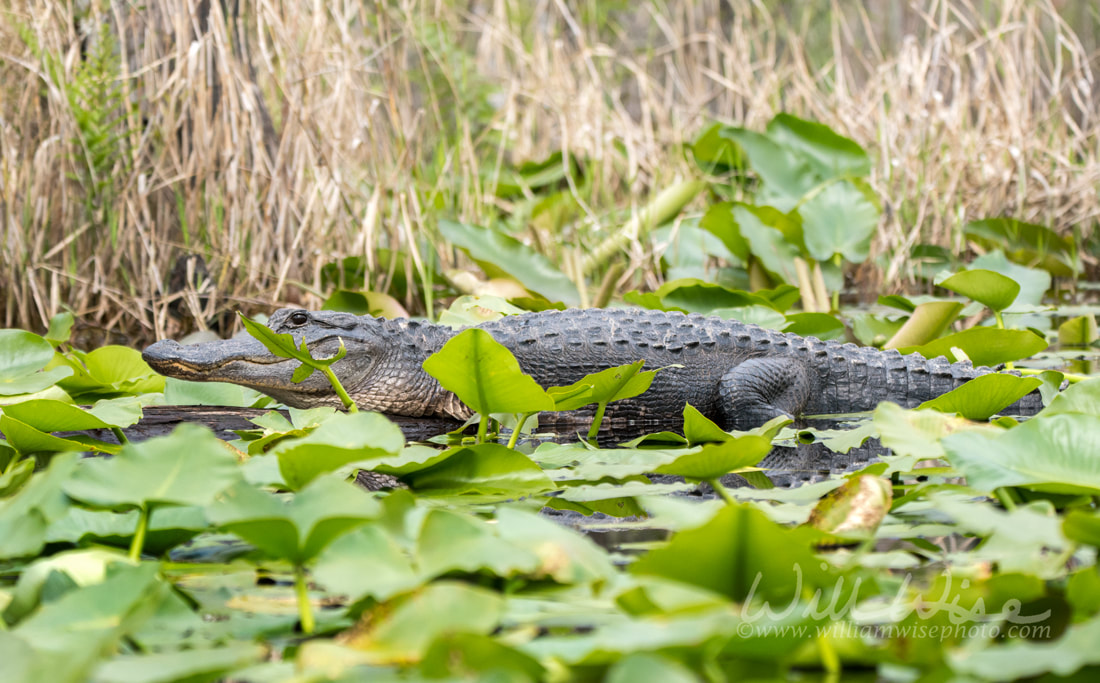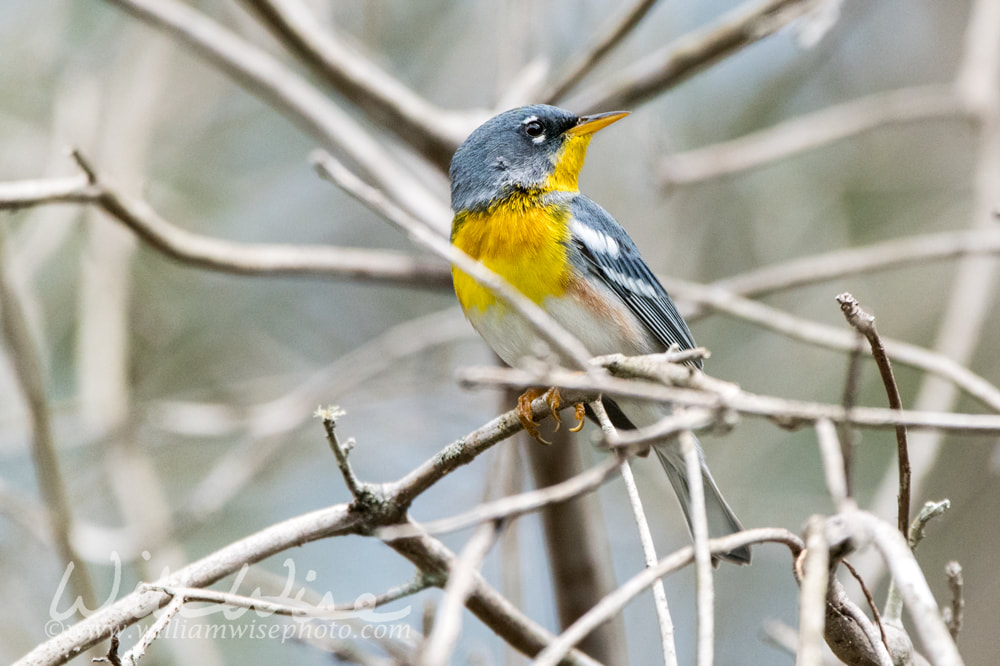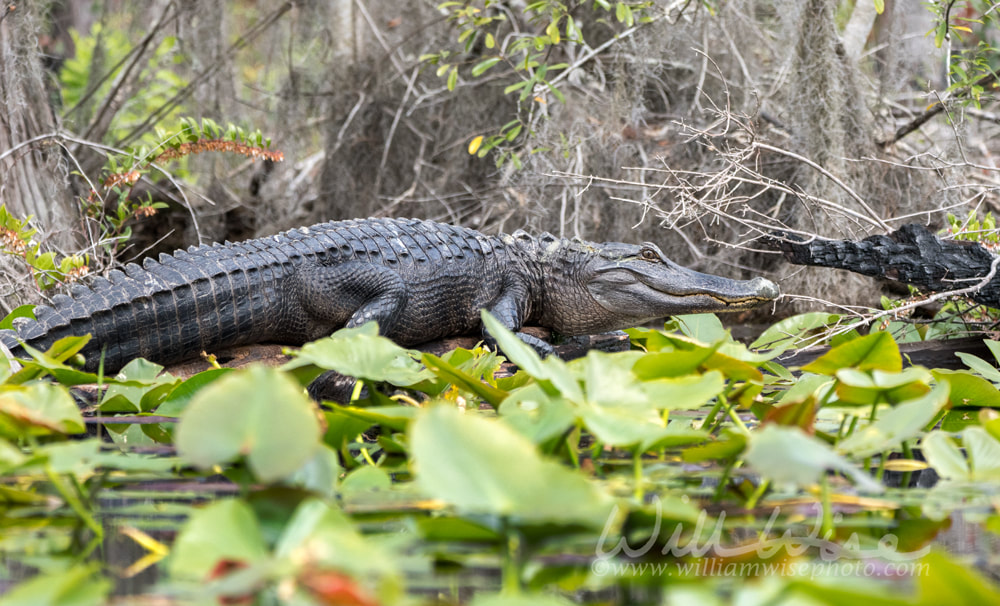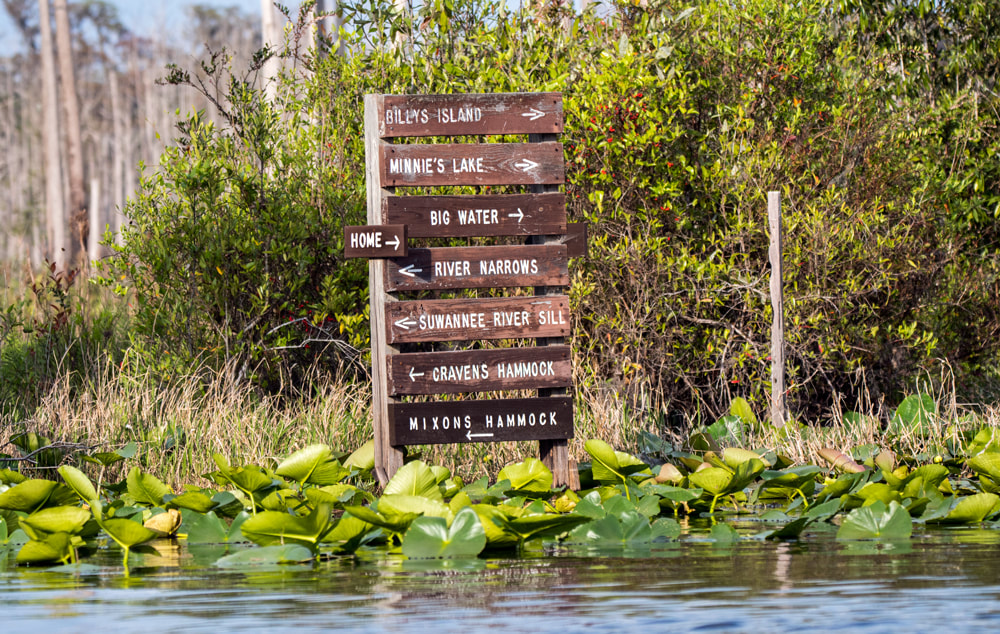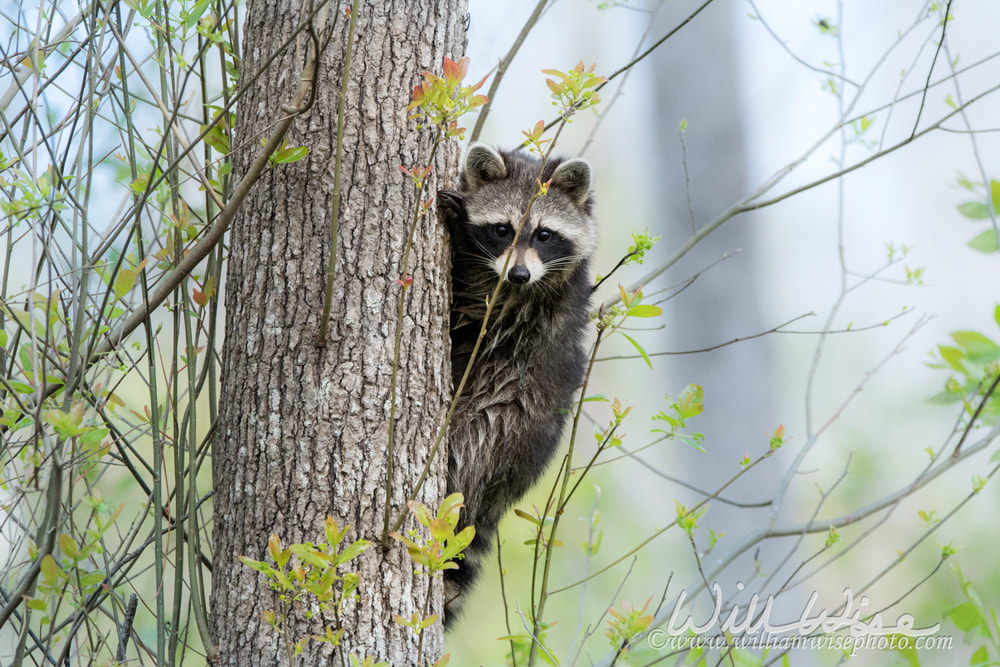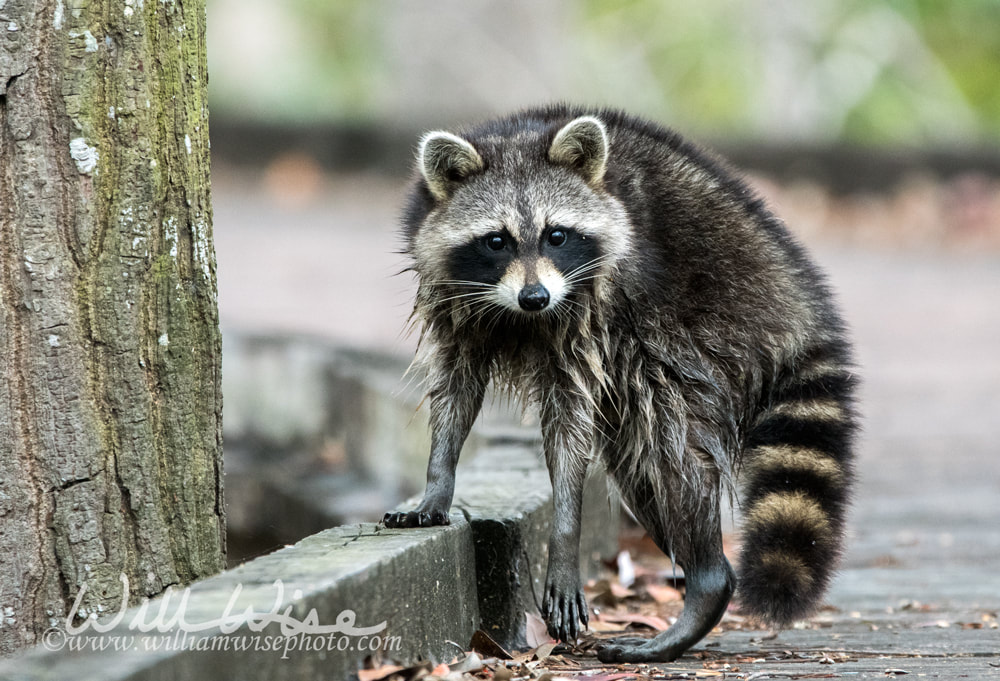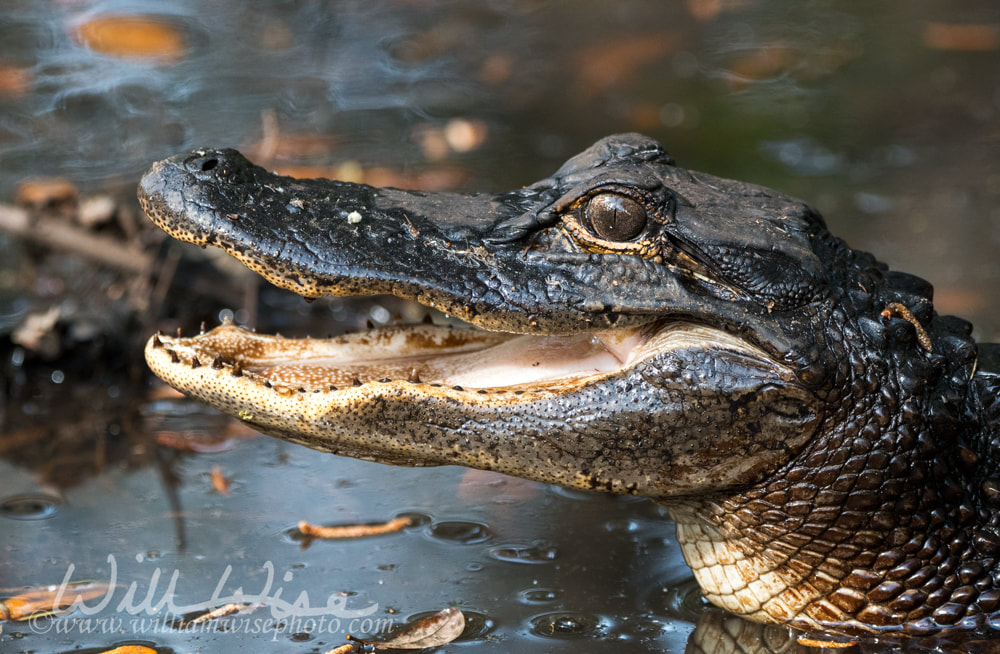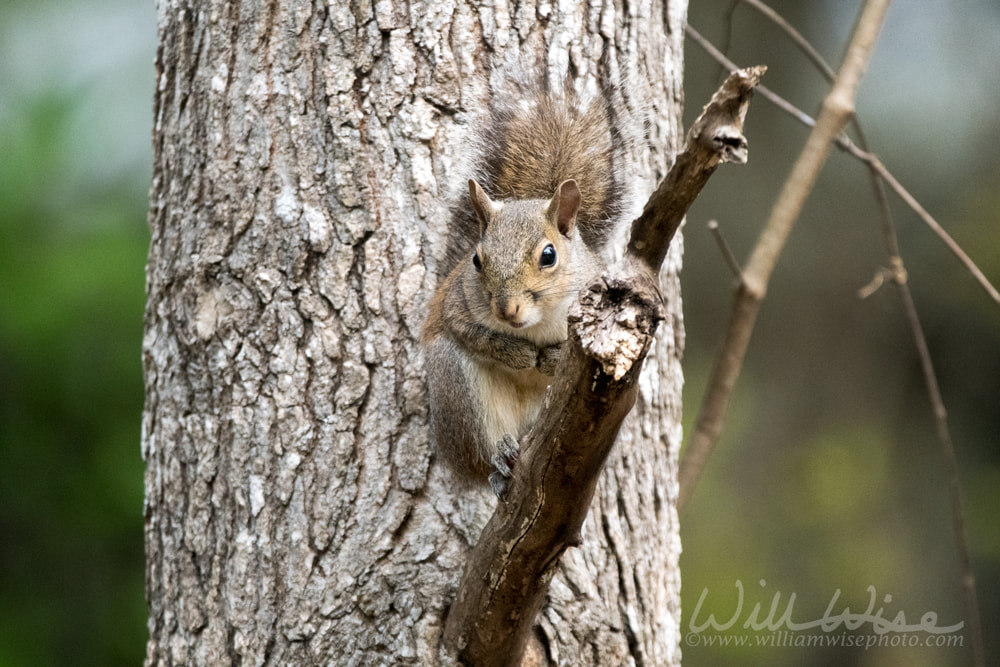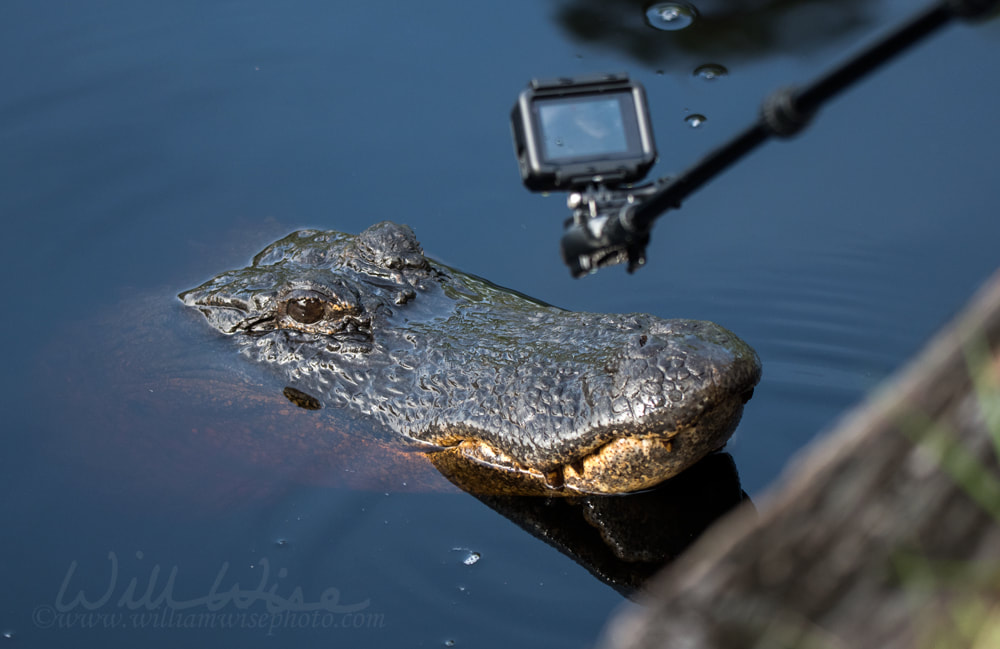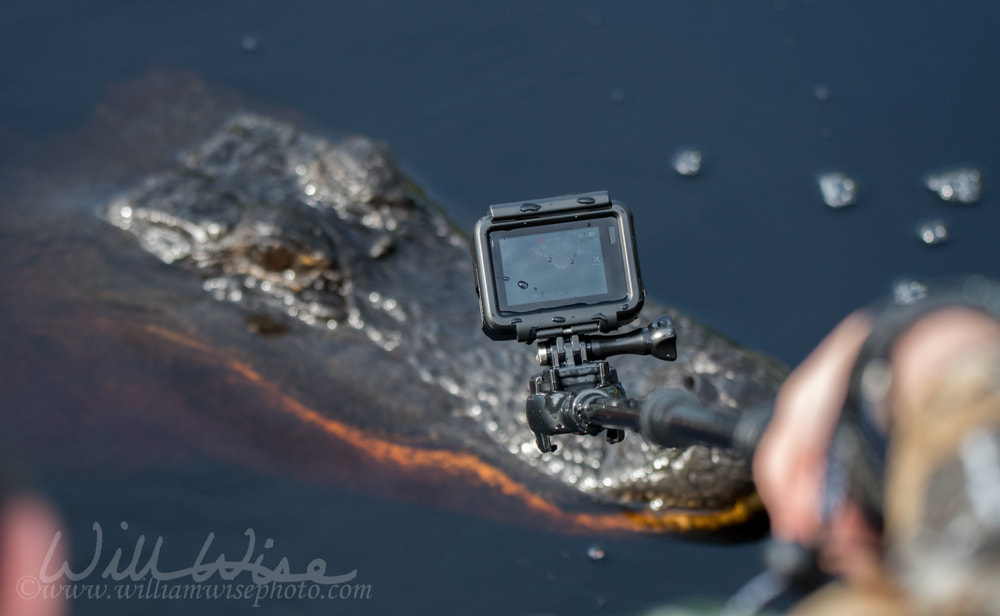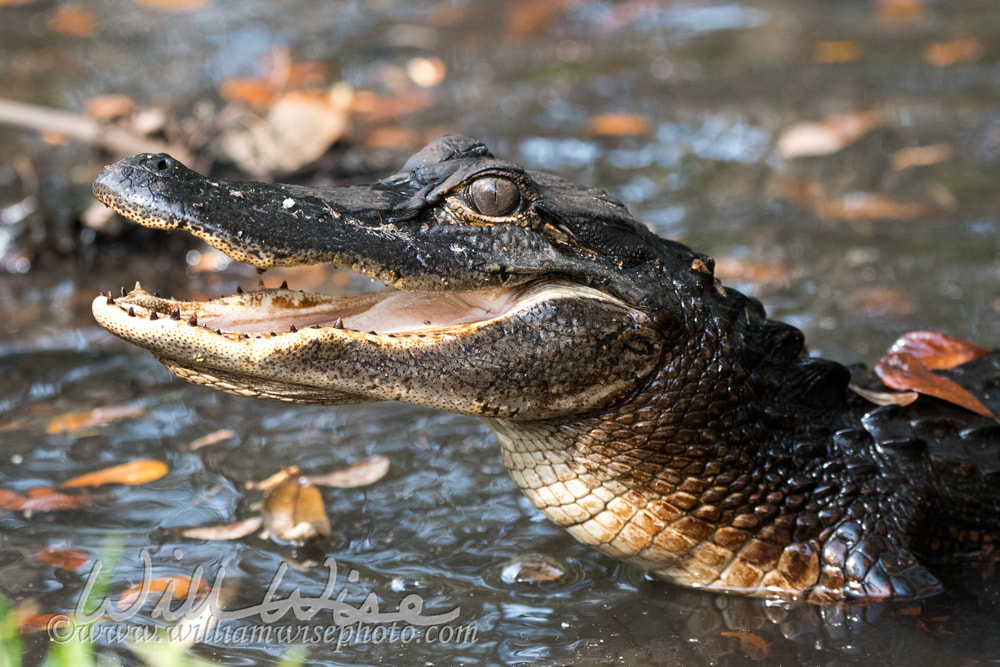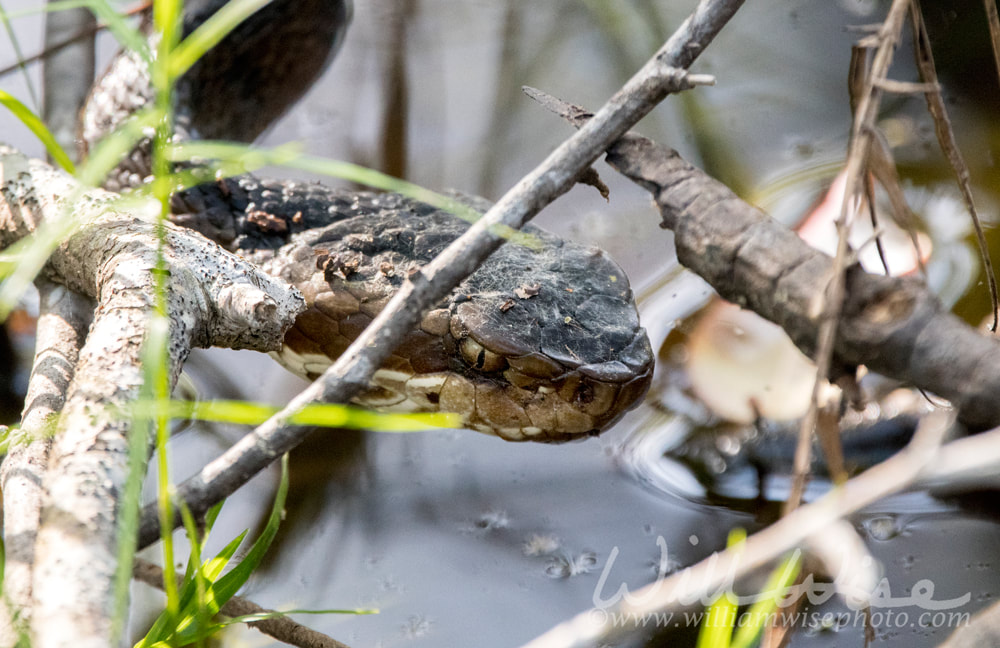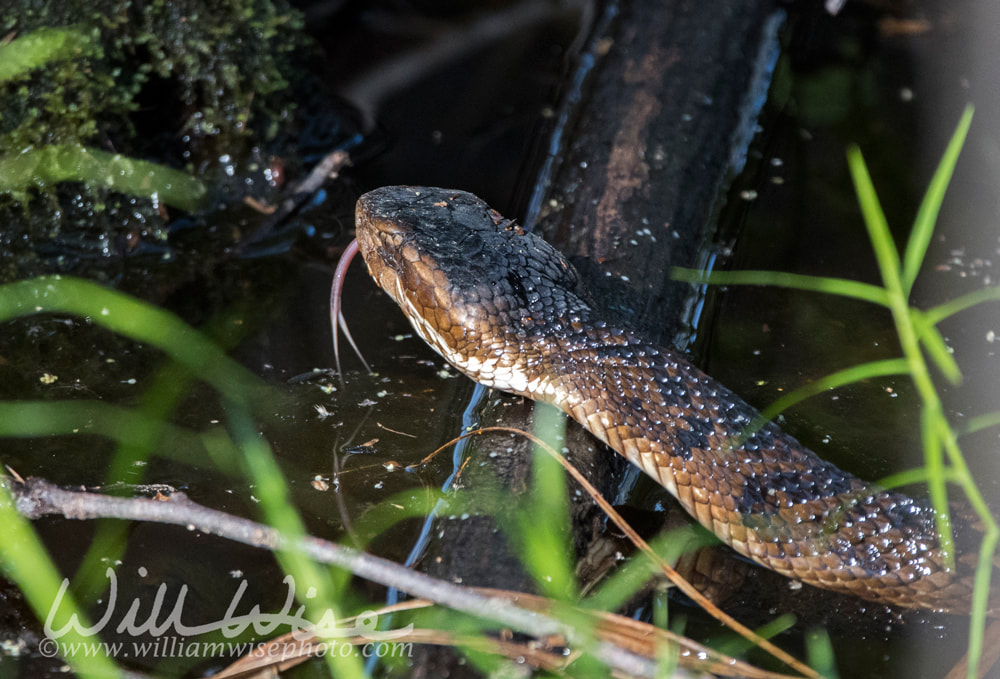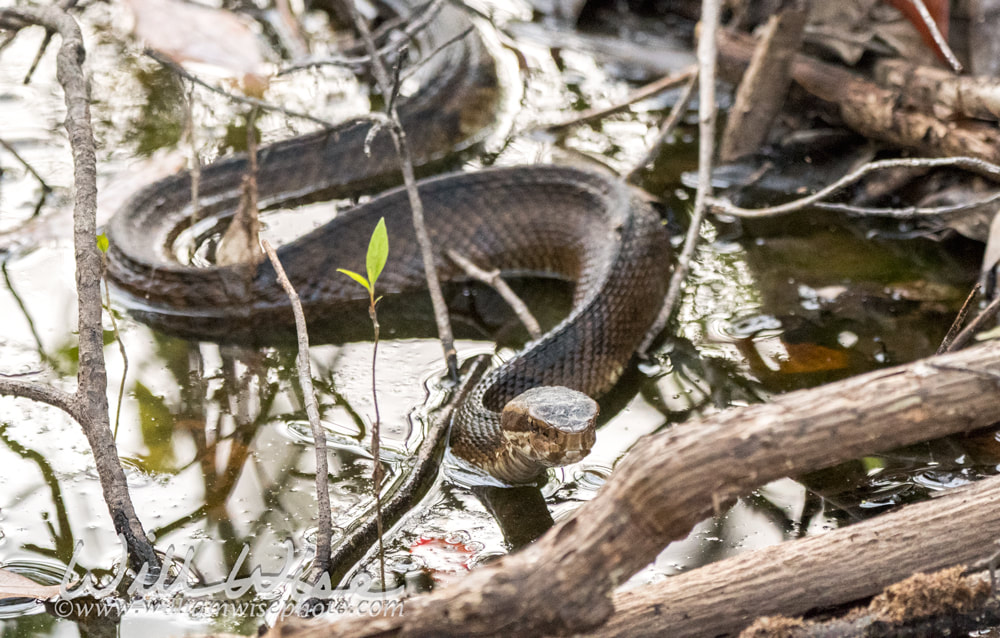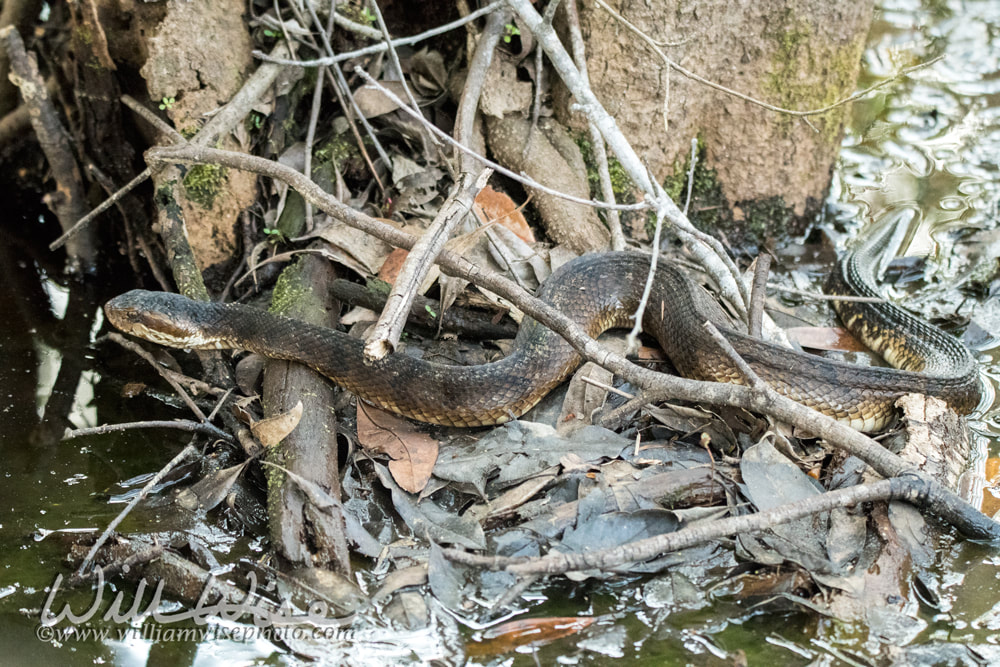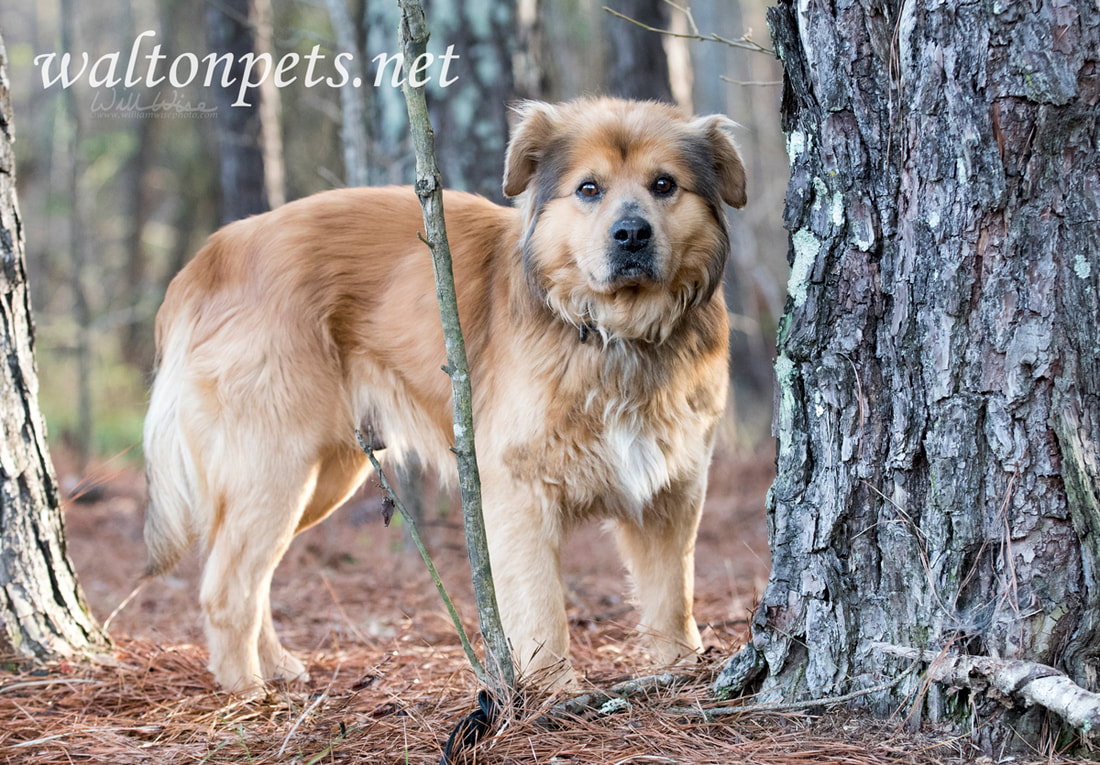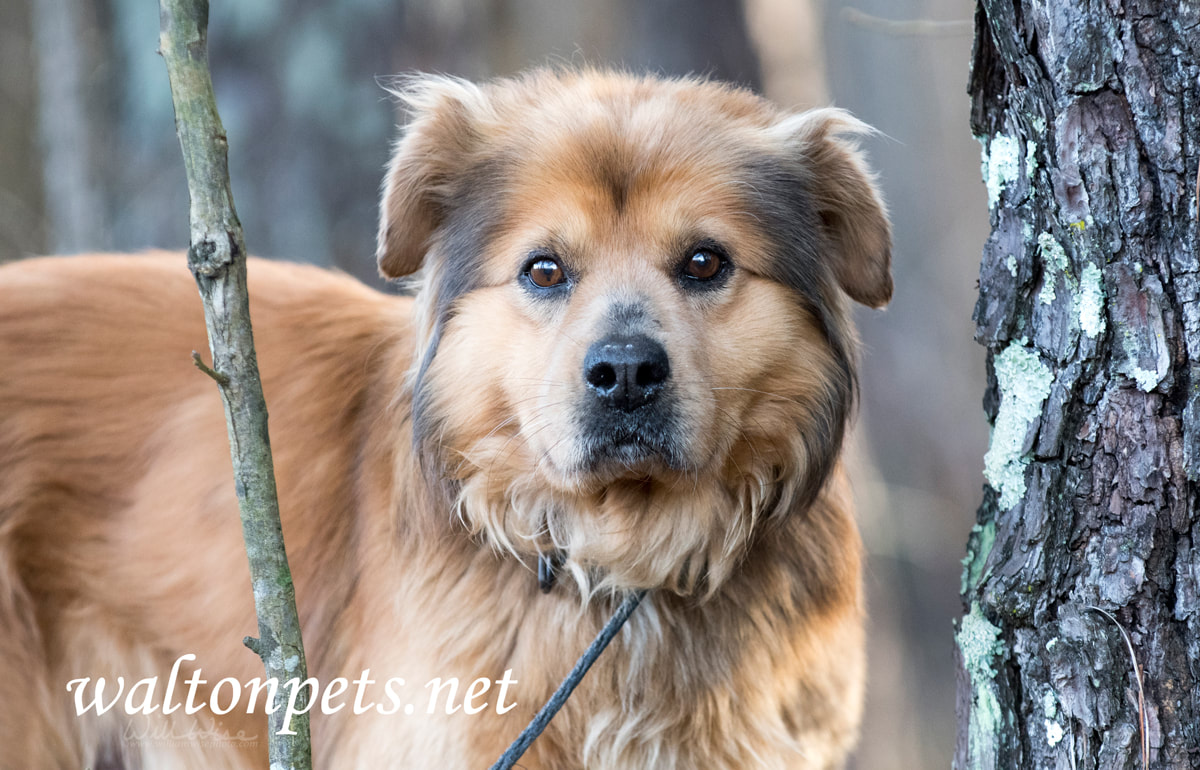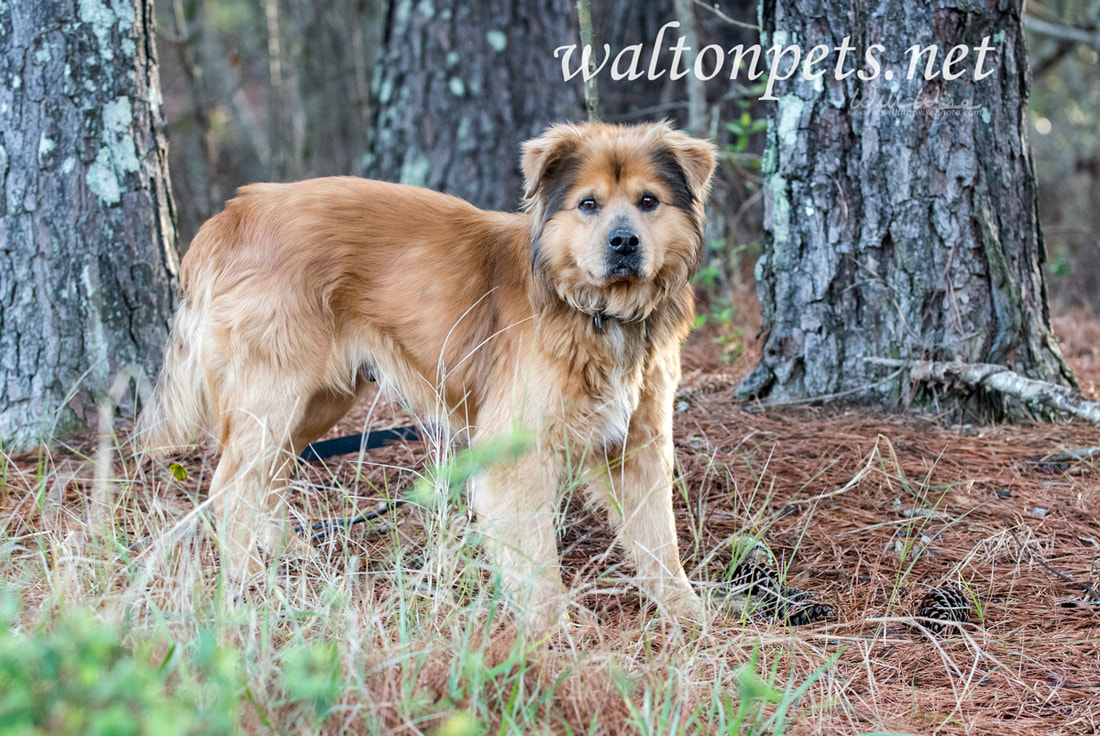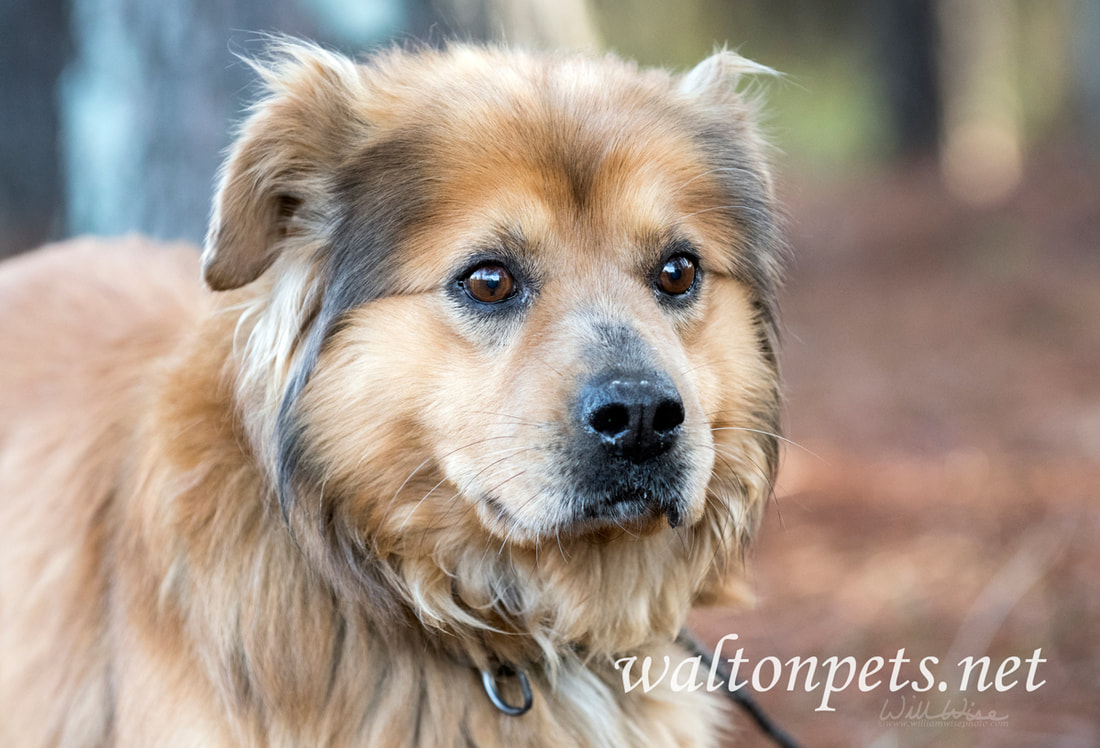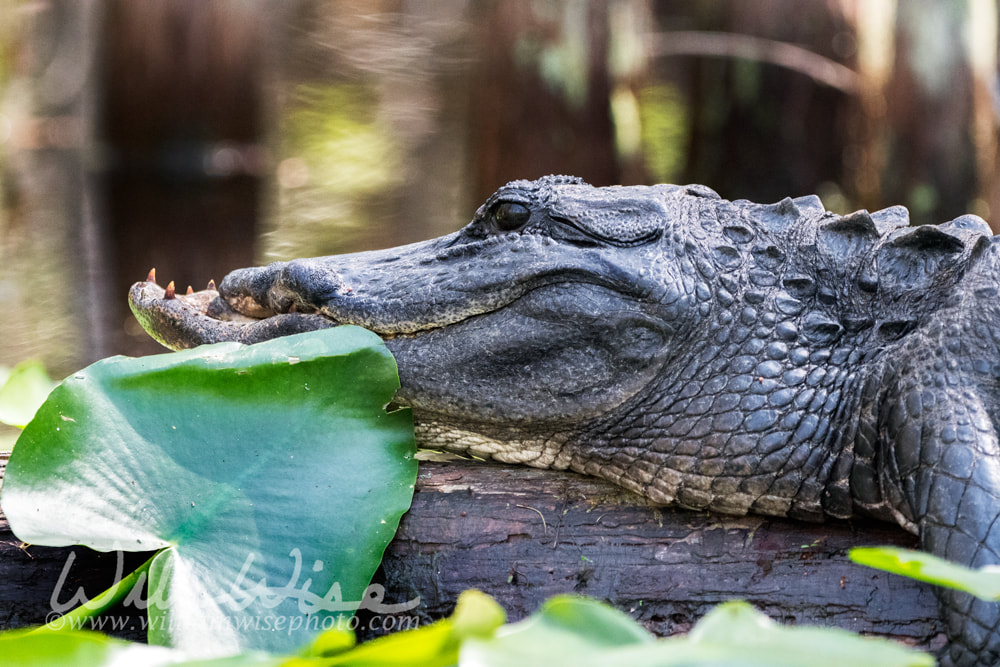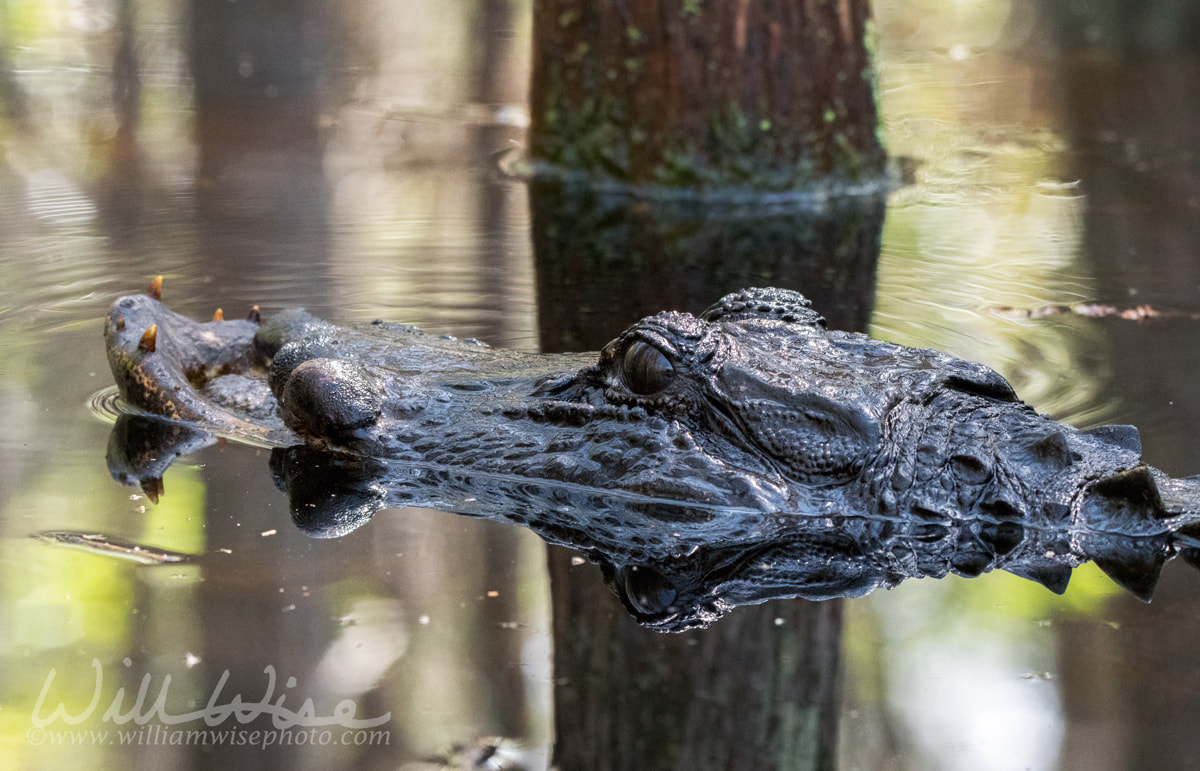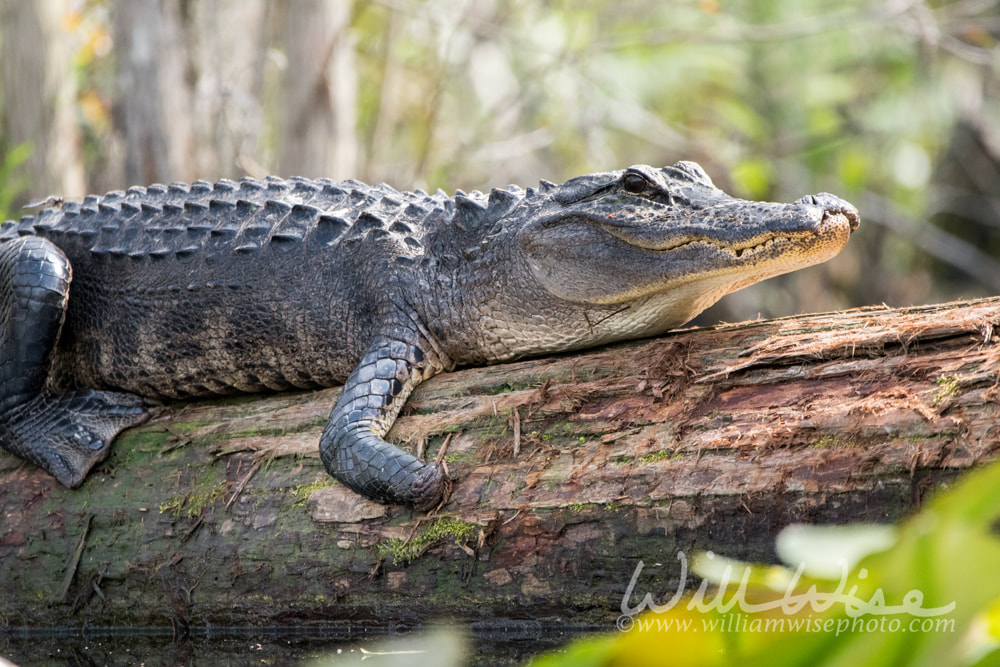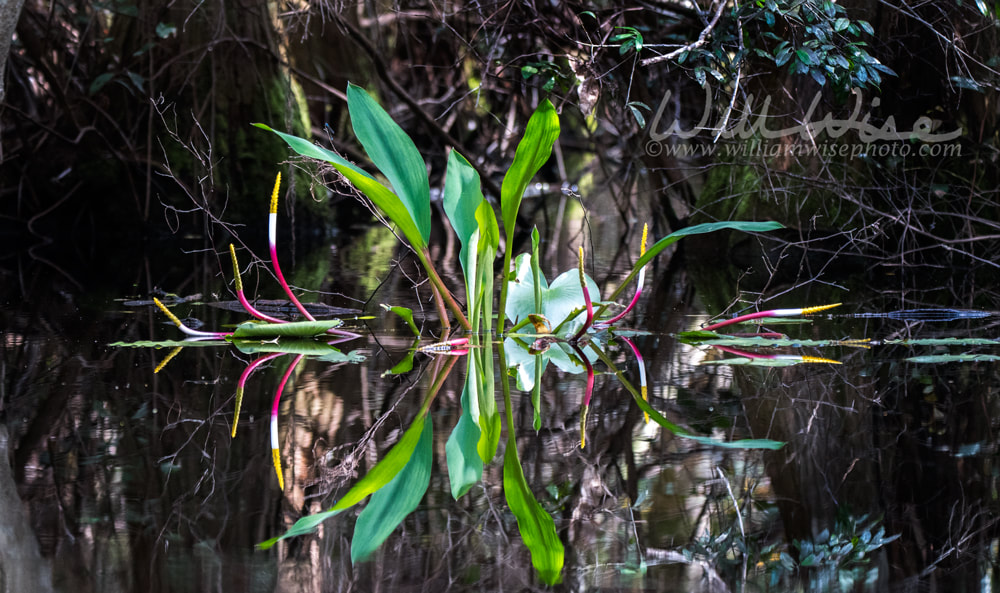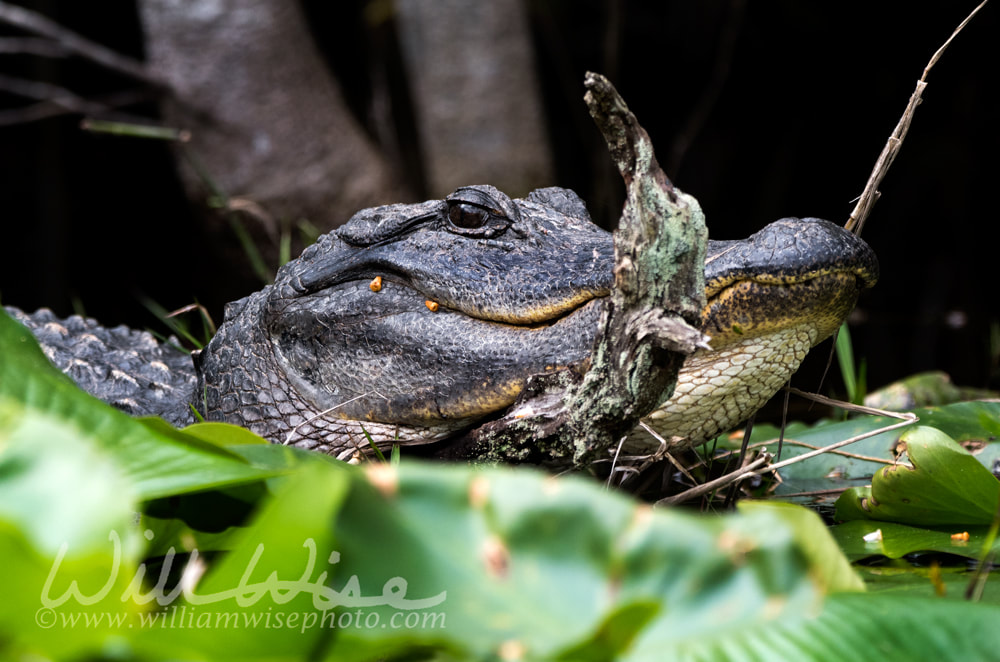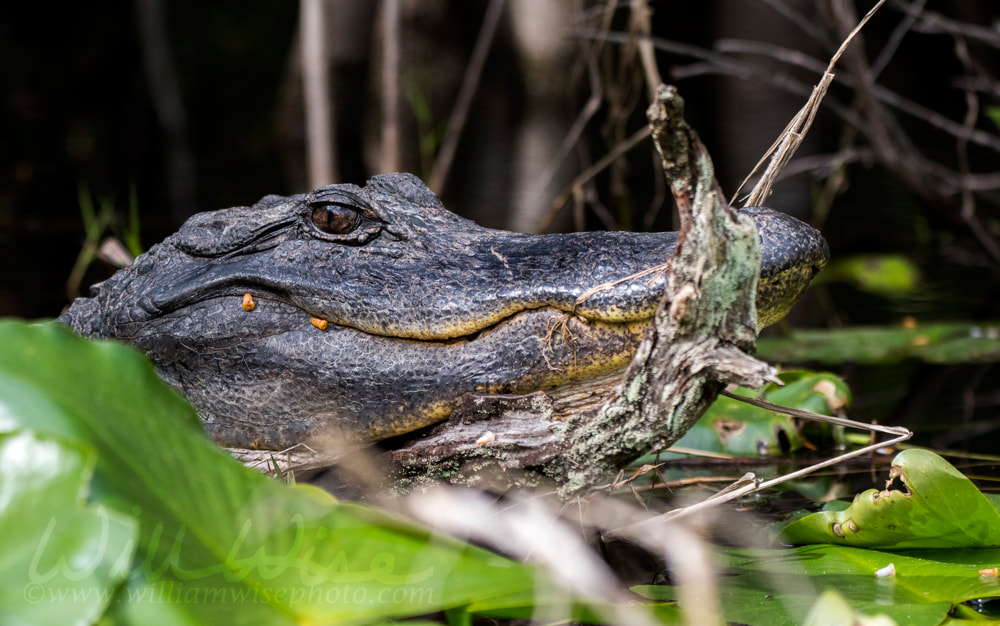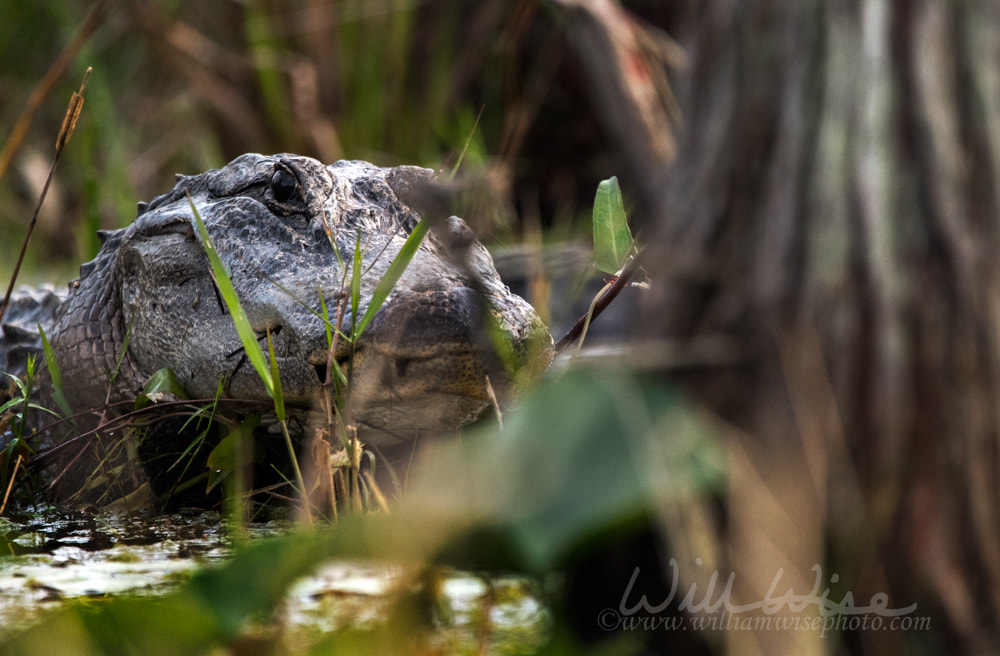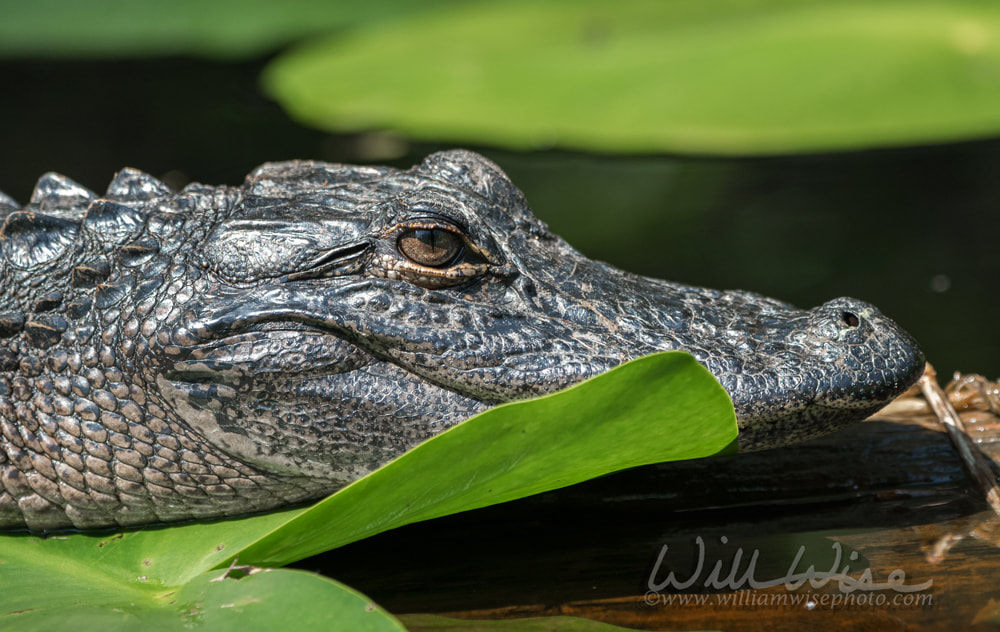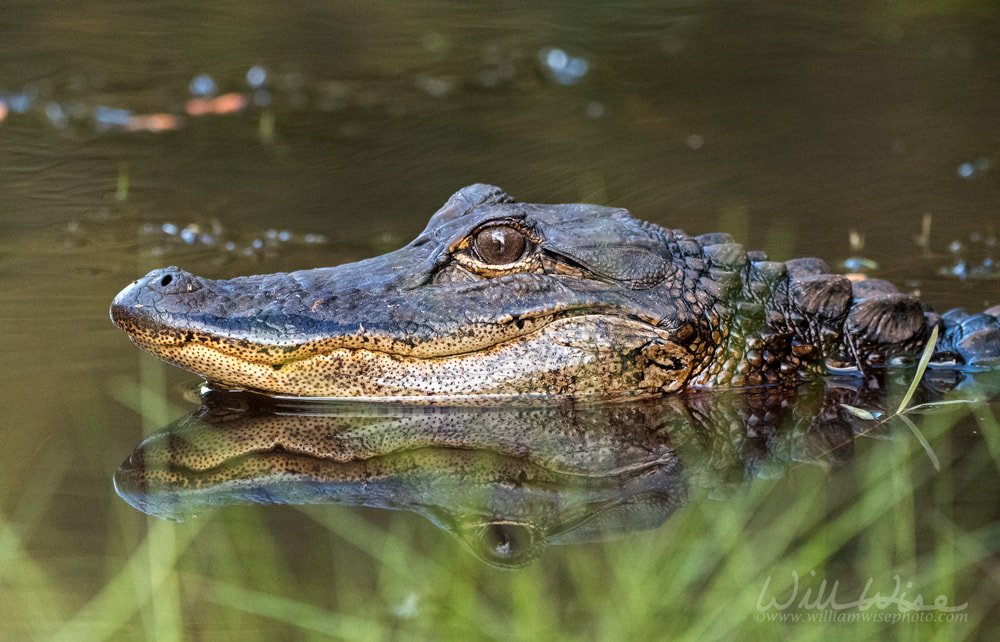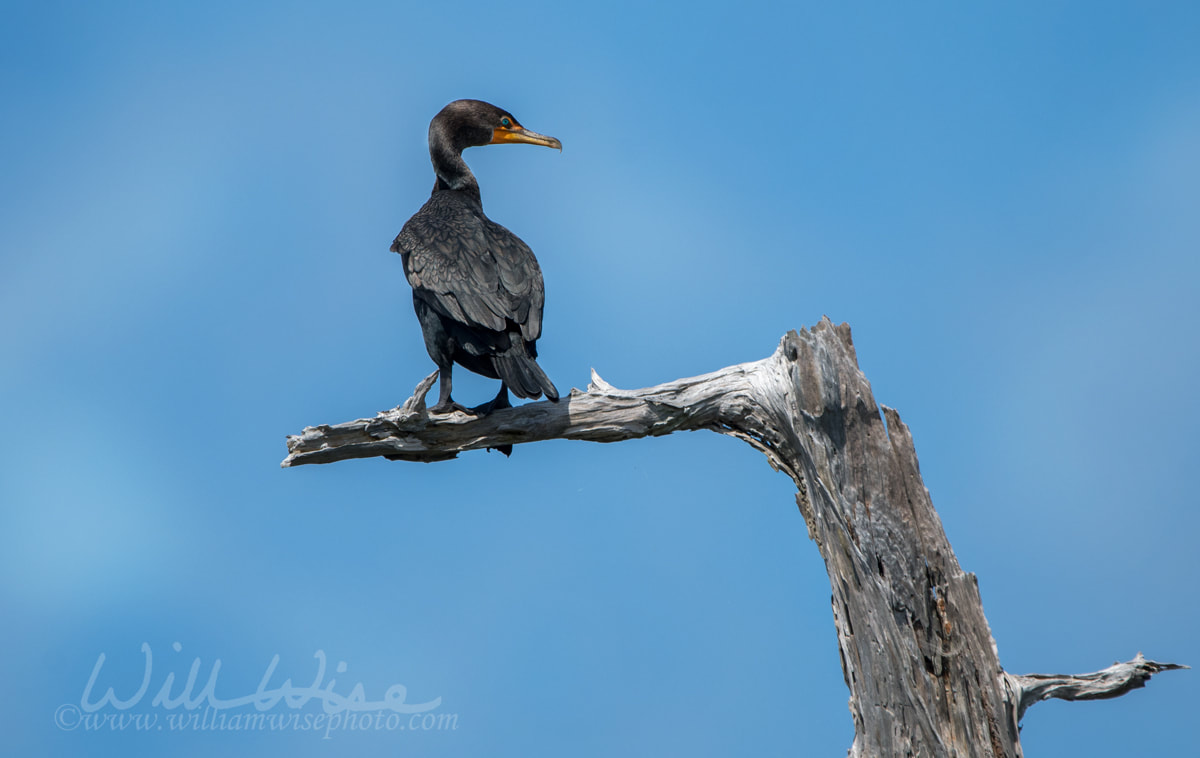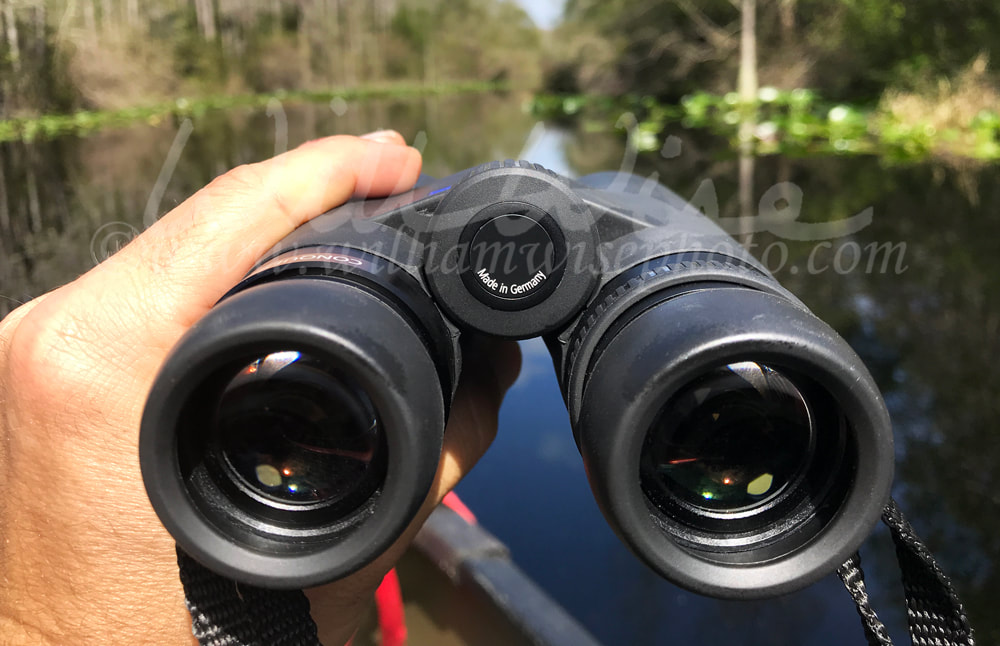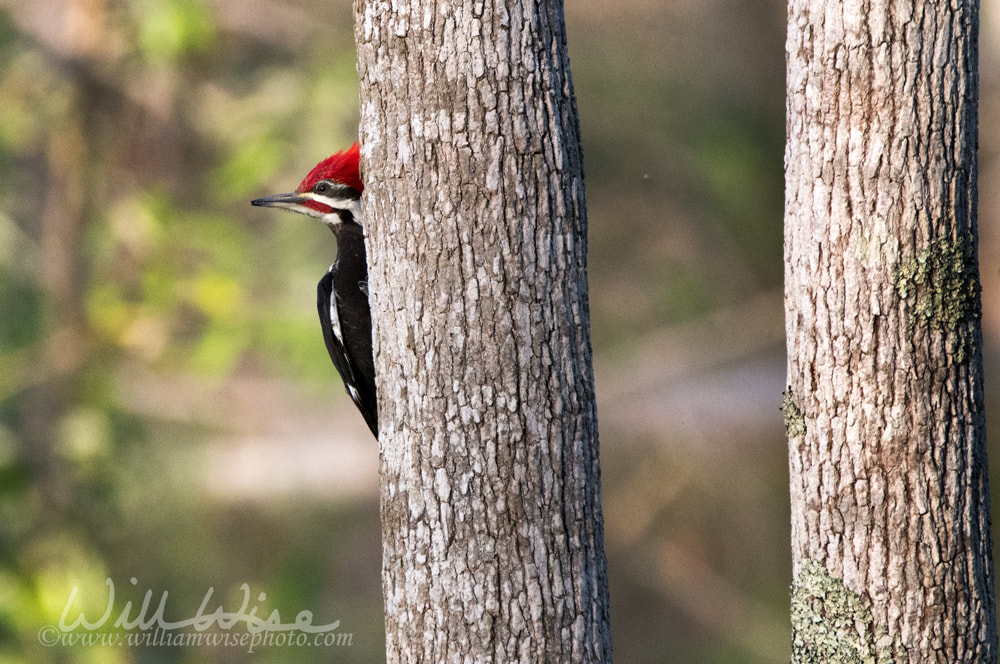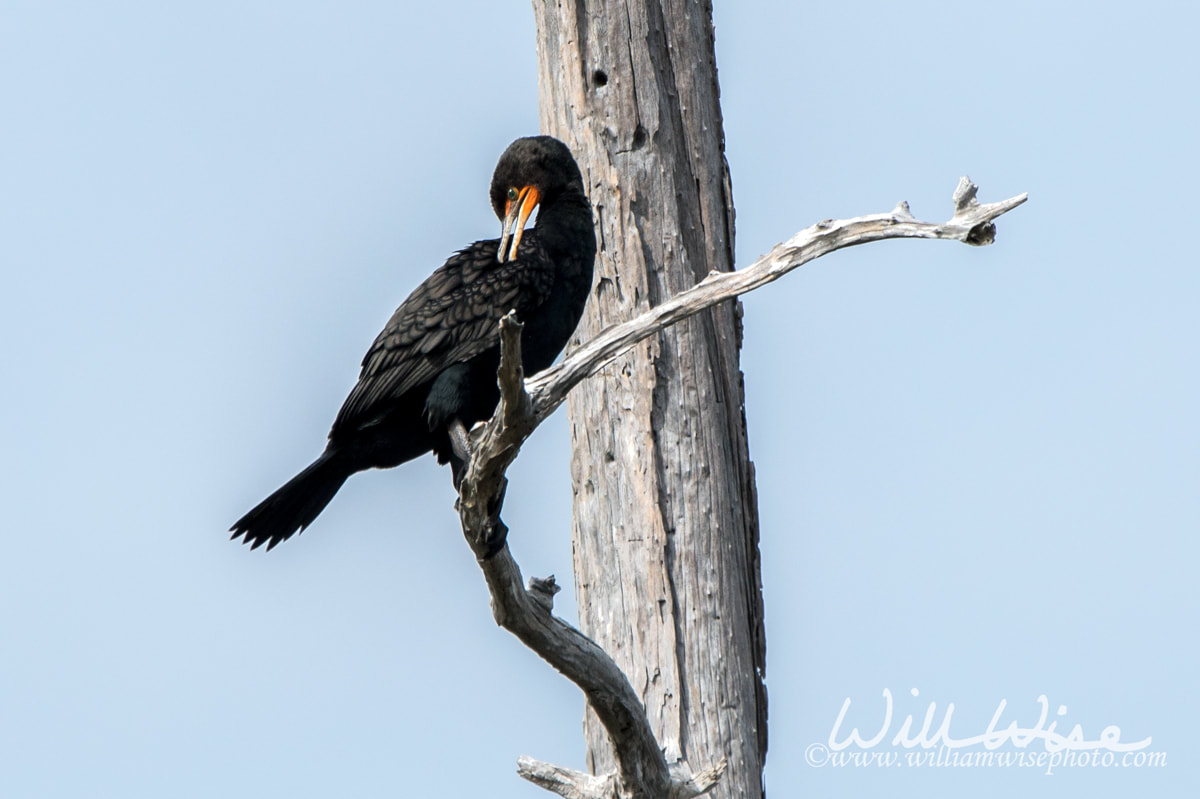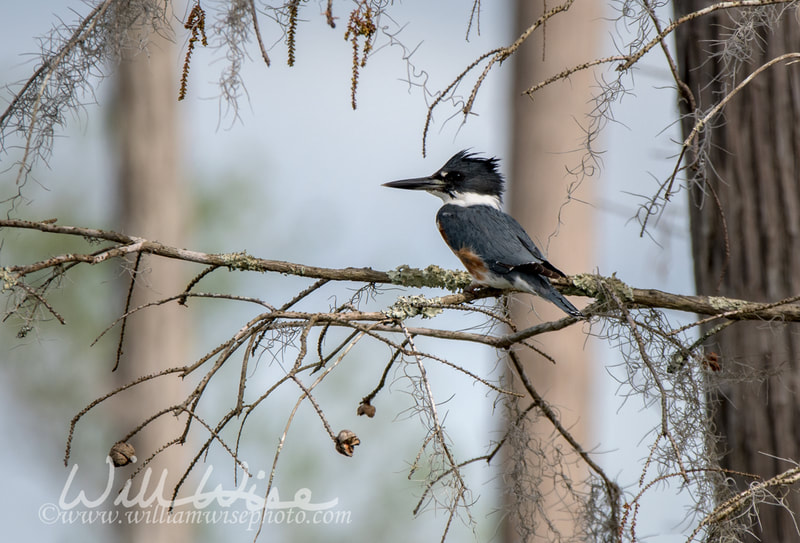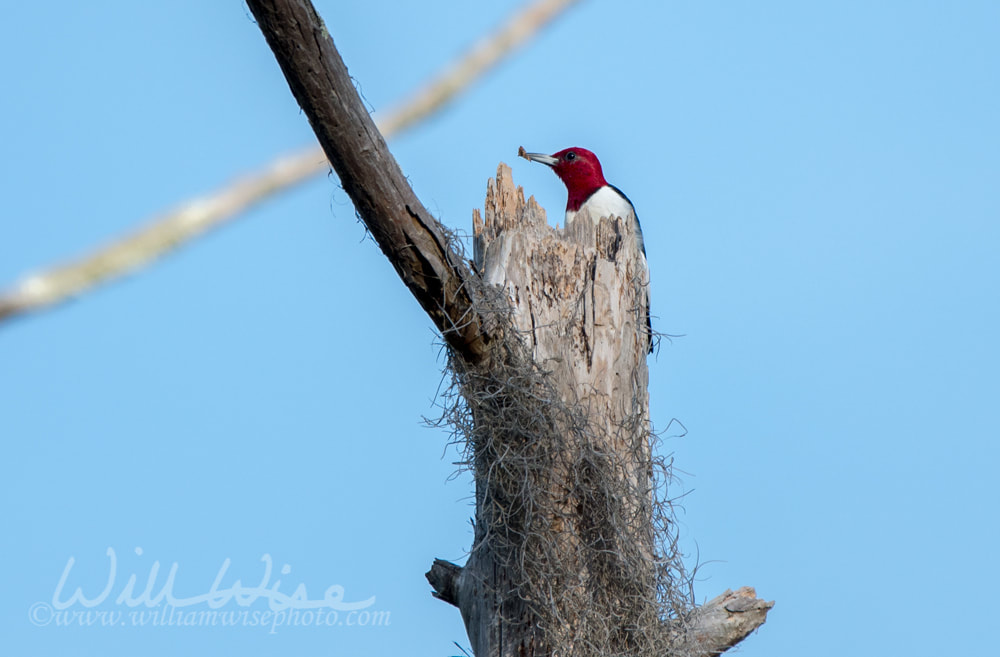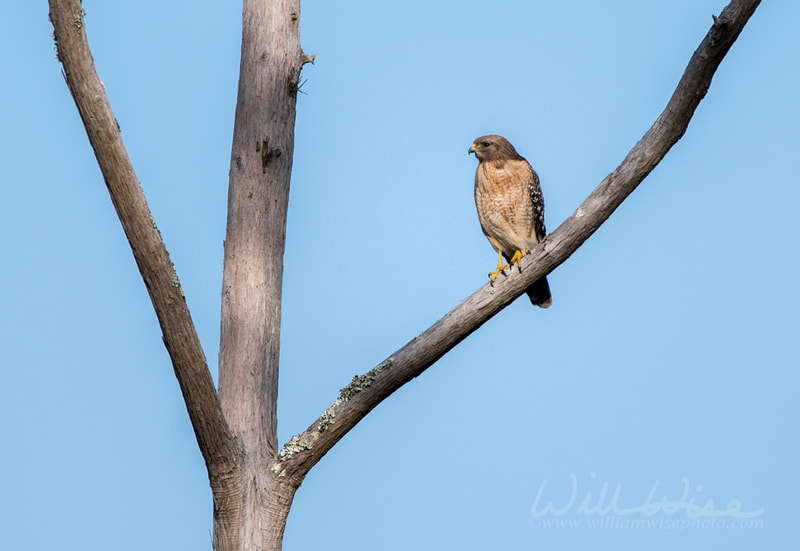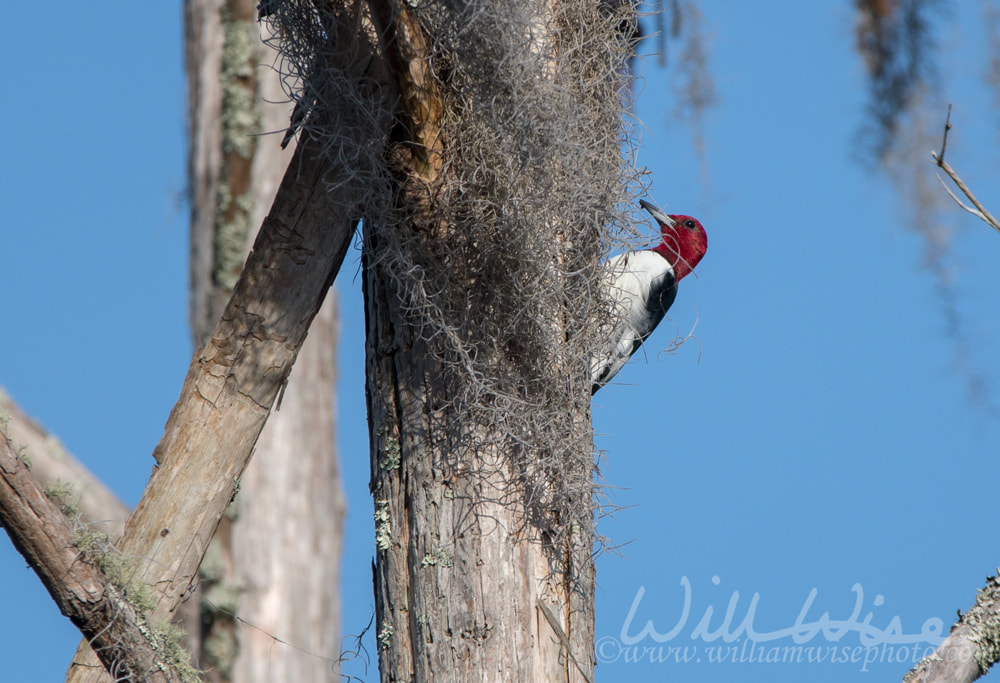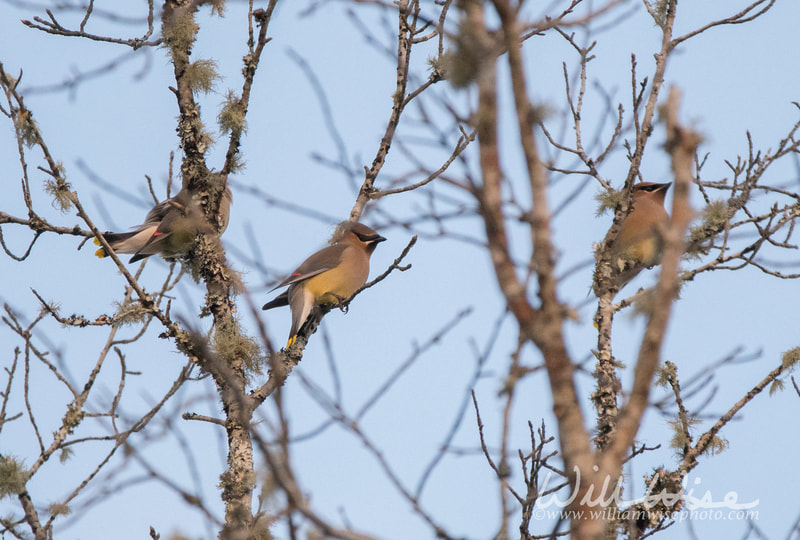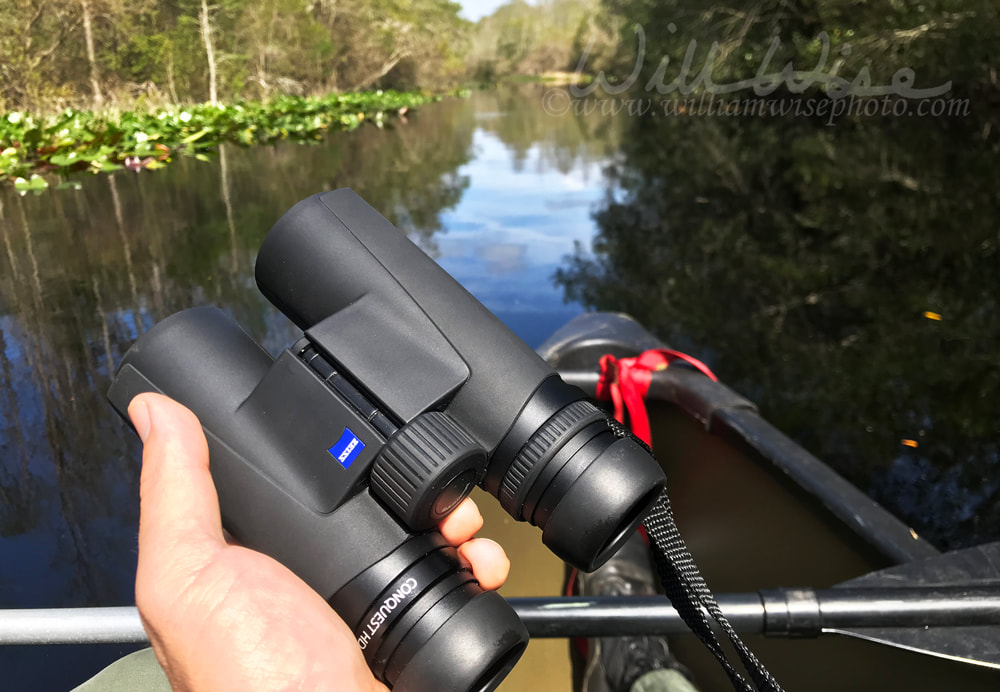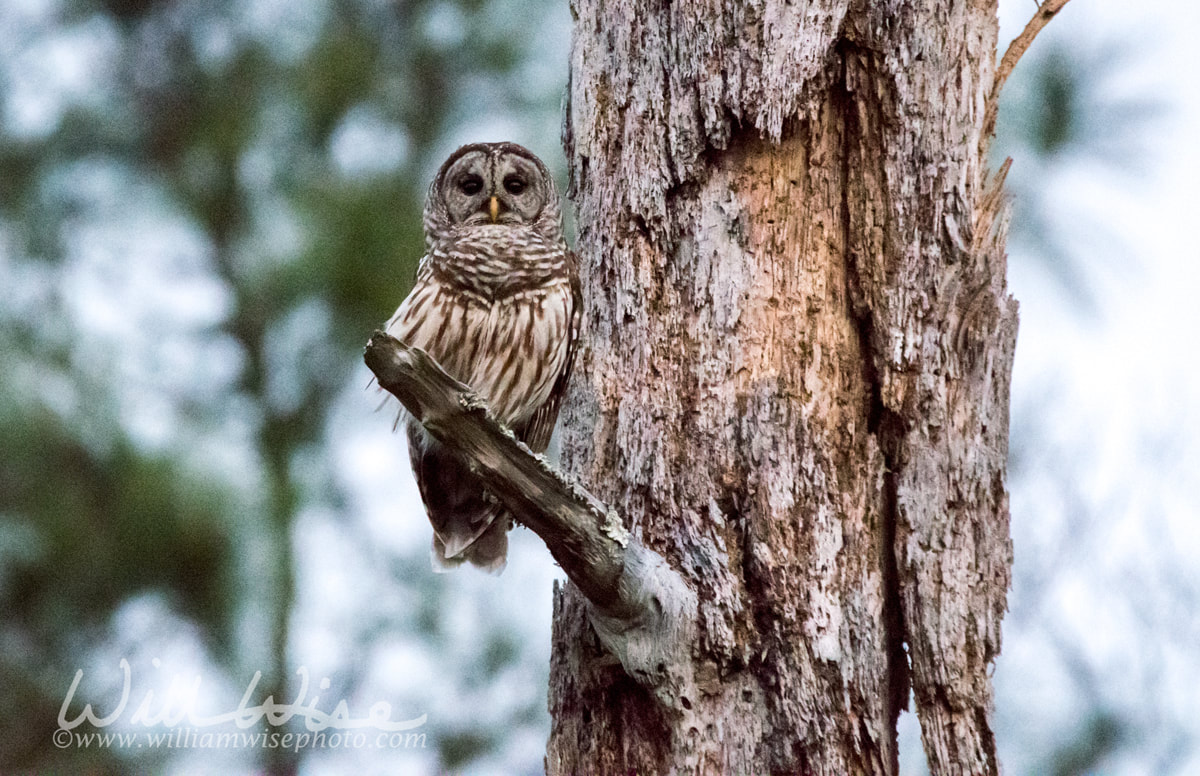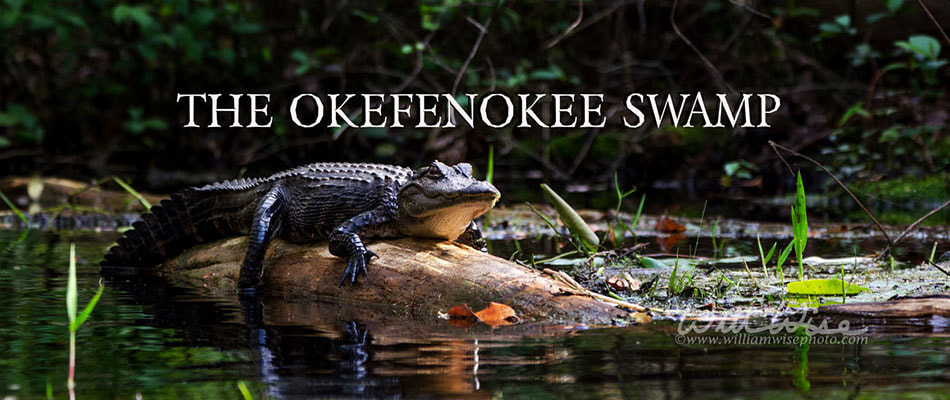
Okefenokee Photography by William Wise. A nature photo journal exploration of Georgia's Okefenokee Swamp, the Land of Trembling Earth, one of the largest blackwater swamps in North America. The alligators, birds, snakes and wildlife of Okefenokee National Wildlife Refuge and Stephen C Foster State Park. -- "What a wildly wonderful world, God! You made it all, with Wisdom at Your side, made earth overflow with your wonderful creations." Psalms 104 The Message
Adventurers to the Okefenokee National Wildlife Refuge in the southeastern United States can apply for permits to overnight at several locations such as Mixon's Hammock, Floyd's Island, and Canal Run. But even if opting to return to a base camp at the Stephen C Foster State Park campground each evening, there are still plenty of canoe trails to fill each day with adventure. There are several options once you hit the water:
Part 3: Where to Paddle
Billy’s Lake
If you are just looking for a morning or afternoon of cruising the open waters for birding and spotting gators, you can spend several hours and never need get more than 4 miles from “home”. As soon as you paddle up the channel from Stephen C Foster State Park’s boat launch you come upon Billy’s Lake. This is one of the largest lakes in the Okefenokee and is about 3.5 miles long. The lake is lined with lily pads, floating beds of peat and hummocks, and burned or fallen logs often topped with basking alligators of all ages and lengths. The shores of Billy’s Lake are also lined with the towering and grand Bald Cypress tree (Taxodium distichum) decorated with Spanish Moss swaying in the breeze. As comorants and herons perch overhead or dive below, there is no end to the photographic opportunities.
If you go out in the morning, turn right out of the Stephen C Foster channel and paddle hard and fast to the east. After a few miles, turn your canoe around and slowly cruise westward along the lake’s shore with the sun over your shoulder. If going out in the evening, do the exact opposite. Facing the wrong direction produces a blinding glare; facing the correct direction with the sun over your shoulder is golden photography!
Explore Billy’s Lake at sunrise and sunset, but when the harsh mid-day light is overhead, head up the shadowed narrow trails of the Okefenokee…
The Red Trail
Getting off Billy’s Lake and up the middle fork of the Suwannee River (the red trail) gives you a real taste of “swamp”. Here the canoe trail narrows, the Spanish Moss laden Cypress Trees block the sky overhead and the brush closes in on the sides. Your trek twists and turns about the textured cypress knees and other organic debris along the path. Red-shouldered Hawks scream unseen overhead and Wood Ducks squeal as they take off at your approach. If you’re lucky, you’ll spot a pod of baby alligators in one of these more secluded spots!
Even with a trolling motor going most of the day, we never reached the northern end of the day-use trail! There is plenty of waterway to fill the day without applying for an overnight permit. As you travel northward, the trail opens up to other lakes and prairies. Minnie’s Lake always hosts a large gathering of gargantuan gators.
We paddle the first several hours of the day northward to Big Water lake. There we each lunch, photograph the gators and Little Blue Herons, and then head back south for “home” at Stephen C Foster State Park.
Eastward to Billy’s Island
Typically on our first or last day, when we only have a few hours, we travel east on Billy’s Lake to Billy’s Island. There is a boat dock there and you can get out and explore. We haven’t ventured far on the island, but friends have found Easton Diamondbacks, baby gators and other things. It is a good place to get out of the canoe, stretch your legs and do a little birding.
Westward toward “The Sill”
On one of our trips we paddled west from Billy’s Lake and into the River Narrows. As the name implies, this was some tricky canoe navigation! But passing through the narrows, we came out onto a beautiful prairie. You can see evidences of the old logging days, including burned out stumps and the posts of an abandoned railroad track. Paddling “The Sill” wasn’t as attractive as other areas of the swamp. Being a man-made canal, it is wide, flat and straight without much scenery surrounding it. However, further up the canal we did find some of the biggest alligators we have seen on our trips. Unless we have several days to explore, I don’t plan another trip up The Sill. If your time is limited, paddling up the red trail to Minnie’s Lake and Big Water are the way to go! Again, I’m no Okefenokee expert, so I’d love to hear what others have to say; especially those of you who have overnighted in the swamp! 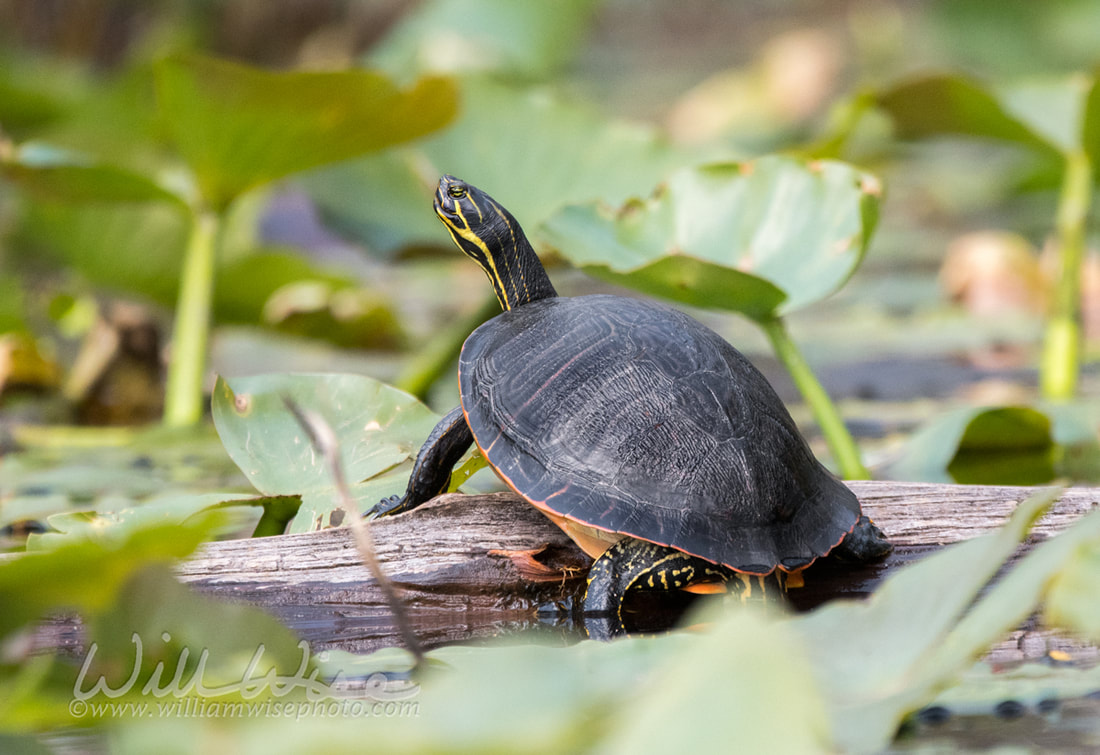
Florida River Cooter slider turtle on lily pads in the Okefenokee Swamp National Wildlife Refuge near Stephen C Foster Georgia State Park. The Coastal plain cooter, Pseudemys concinna floridana, or Florida cooter is a large freshwater turtle found in the southeastern coastal plain of the United States, from Virginia southward through Florida.
0 Comments
 Okefenokee Photography by William Wise. A nature photo journal exploration of Georgia's Okefenokee Swamp, the Land of Trembling Earth, one of the largest blackwater swamps in North America. The alligators, birds, snakes and wildlife of Okefenokee National Wildlife Refuge and Stephen C Foster State Park. -- "What a wildly wonderful world, God! You made it all, with Wisdom at Your side, made earth overflow with your wonderful creations." Psalms 104 The Message The Okefenokee Swamp is a gorgeous National Wildlife Refuge in the southeastern United States. The majority of its 438,000 acres lies within the state of Georgia. This refuge is a nature photographer’s delight. I'm not an Okefenokee expert, but I have visited the swamp four times and have developed a good system that worked for me. I want to share these experiences to help others maximize a delightful photo adventure. PART 2: WHEN TO OKEFENOKEEI suppose you can do the Okefenokee anytime of the year, but our trips have always been in March during my daughter’s spring break. I haven’t been there at other times (other than one day trip in January), but I know about South Georgia summers and think spring might offer a more comfortable atmosphere. The cooler late winter/early spring temperatures mean several things. One of the best things about a March visit is fewer insects! There is nothing that can put a damper on things like flies that can bite through clothes, seemingly repellent-resistant mosquitoes, and relentless gnats that always congregate near your nostrils and eyes. On our last visit in March, I only had to put on repellent in the evenings at the campground. There was little need during the day while out on the swamp. Late winter/early spring also means cool water and cool nights. Why is that good for photography? Well, as the sun climbs, the daytime temperatures begin to hit the 80’s. Those cold-blooded alligators are more than anxious to climb out of the cool water and bask in the golden rays. If you hit the lighting right, there are ample opportunities to shoot all sizes of gators laying about on the peat mats, lily pads and fallen Cypress stumps. And spring temperatures are much nicer that baking in an open canoe in August in Georgia! I don’t know when Stephen C Foster State Park’s peak season may be, but we’ve always enjoyed fewer folks and plenty of open campground spots during our March visits; especially if your stay is mid-week. Again, I haven’t stayed at Stephen C Foster in any other month, but March really has worked well for us. Perhaps others can chime in about their favorite times to Okefenokee by leaving a comment below. 
Okefenokee Photography by William Wise. A nature photo journal exploration of Georgia's Okefenokee Swamp, the Land of Trembling Earth, one of the largest blackwater swamps in North America. The alligators, birds, snakes and wildlife of Okefenokee National Wildlife Refuge and Stephen C Foster State Park. -- "What a wildly wonderful world, God! You made it all, with Wisdom at Your side, made earth overflow with your wonderful creations." Psalms 104 The Message
The Okefenokee Swamp is a gigantic and gorgeous National Wildlife Refuge in the southeastern United States. The majority of its 438,000 acres lies within the state of Georgia, but a portion stretches southward into Florida. This refuge is a nature and wildlife photographer’s delight, being full of the natural beauties of fauna and flora. I have visited the swamp four times and have developed a good system to maximize a delightful photo adventure.
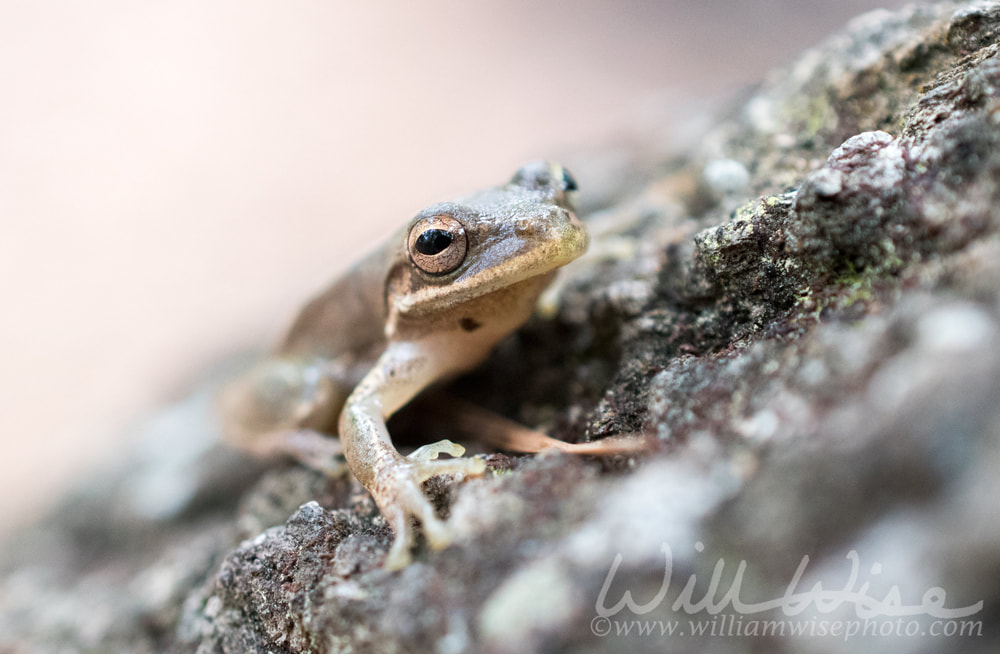
Macro photography of a Squirrel Tree Frog, Hyla squirella, climbing a tree in the Okefenokee Swamp National Wildlife Refuge, Georgia. Stephen C Foster Georgia State Park campground. Shot with 40mm macro lens. The squirrel tree frog Hyla squirella is a small species of tree frog found in the southeastern United States, from Texas to Virginia. This little frog was found under our cooler when we struck camp to leave on March 16, 2019.
pART 1: WHERE TO STAY
There are a few entrances and boat launches within the Okefenokee, but I have always used the Stephen C Foster State Park as my base of operations while paddling the swamp. Normally I prefer backcountry and wilderness treks, but if photography is your main goal, there is an advantage to “taking it easy” and staying in a campground.
ELECTRICITY!
One of the main advantages is electricity! Camera batteries die. And it seems that the newer the camera, the more quickly they die. Why? Bluetooth connections, brighter LED screens, better metering and autofocus systems… all these place a drain on the batteries. On an extended trip, your canoe might sink due to all the extra batteries you’d have to bring along! But each of the Stephen C Foster State Park’s 66 campsites have an electrical outlet. There is no need to drag along a generator or tax your vehicle’s battery when power is needed.
Returning to camp each evening, those tired cells of lithium life can be refueled! I always bring a fifty-foot extension cord and a multi-outlet surge protector. We run that cord from the RV electrical hookup right into our tent. Not only are the camera batteries recharged, but so is the cell phone. I also bring along my laptop so I can stay ahead of the workflow game and begin downloading and culling each day’s photos before even getting home. COMFORT!
I fully understand that the entire point of camping is to “rough it”. And while I still love the primitive, wilderness camping adventures, I must admit that not only does staying in the Stephen C Foster campground help recharge my camera batteries each night, but sleeping on a cot in my comfortable tent also helps revive my aging body with a better night’s sleep!
The Stephen C Foster campground also has several “comfort stations” with clean showers, restrooms and washer/dryer within each campground loop. You’ll be ready and fresh each morning for a full day’s photography of the gorgeous Okefenokee Swamp! And if you really want comfort, there are nice cabins at the park as well. SECURITY!
While staying at Stephen C Foster State Park, I’ve never had an issue with my campground being plundered while gone all day paddling the swamp. Yes, there is an unwritten code of ethics and a sense of community amongst like-minded campers, but having a campground host ever present and regular patrols from certified law enforcement park rangers helps too!
The sole entrance to the park is also gated and closed each evening. While I don’t want to temp anyone by leaving expensive camping or camera gear lying around, I have never returned to camp at night to find my propane stove or folding chairs missing.
Come back for more Okefenokee Swamp How-To Photographer's Guides!
 Okefenokee Photography by William Wise. A nature photo journal exploration of Georgia's Okefenokee Swamp, the Land of Trembling Earth, one of the largest blackwater swamps in North America. The alligators, birds, snakes and wildlife of Okefenokee National Wildlife Refuge and Stephen C Foster State Park. -- "What a wildly wonderful world, God! You made it all, with Wisdom at Your side, made earth overflow with your wonderful creations." Psalms 104 The Message Excerpt from E.A. McIlhenny's 1935 book, The Alligator's Life History:
E.A. McIlhenny (1872 – 1949), of the McIlhenny Tabasco Sauce company, was a hunter, explorer and naturalist that established the Avery Island wildlife refuge on his family estate in Louisiana and wrote The Alligator's Life History in 1935. While some of his statements are criticized by modern science, he was one of the most knowledgeable alligator experts in the country at the time. His work contains valuable information and entertaining anecdotes.  Okefenokee Photography by William Wise. A nature photo journal exploration of Georgia's Okefenokee Swamp, the Land of Trembling Earth, one of the largest blackwater swamps in North America. The alligators, birds, snakes and wildlife of Okefenokee National Wildlife Refuge and Stephen C Foster State Park. -- "What a wildly wonderful world, God! You made it all, with Wisdom at Your side, made earth overflow with your wonderful creations." Psalms 104 The Message Excerpt from Francis Harper's Mammals of the Okefinokee Swamp, published March 1927:

Okefenokee Photography by William Wise. A nature photo journal exploration of Georgia's Okefenokee Swamp, the Land of Trembling Earth, one of the largest blackwater swamps in North America. The alligators, birds, snakes and wildlife of Okefenokee National Wildlife Refuge and Stephen C Foster State Park. -- "What a wildly wonderful world, God! You made it all, with Wisdom at Your side, made earth overflow with your wonderful creations." Psalms 104 The Message
There she lay; just ten feet from the edge of the dock. How could I resist? A big alligator right there within reach of my action camera. I hit record and lay upon my belly, stretching my arm to full length, the camera is only inches from her snout. No doubt this would be some great, close-up gator footage! Then it happened. SNAP!!! Either she was really ticked off, or thought my camera was a free handout of food. No more camera.
Seems like a stupid idea to harass an alligator? Yes, it is. Perhaps my story is a bit of dramatization and the camera wasn’t actually eaten. But what if it were true? That was an expensive bite! Or what if it were your hand, rather than your camera that gets chomped by a big gator? But how many photographers push the limits trying to get that photo or video that will go viral? It does well to keep a clear mind and some common sense when in the field.
Wild animals are wild! Even if they seem to be laying nearby just begging for a photograph, wild animalsare not tame pets. Just search the internet for tourist deaths on safari and you’ll see nobody is exempt: a billionaire trampled by an elephant… a grandmother killed by a hippopotamus… These “accidents” don’t only take place with “dumb tourists.” A few years ago, a professional graphic effects creator filming a documentary in South Africa was killed as she rolled down her windows to capture close-up footage of a lioness... a bit too close up!
As photographers, we can become totally absorbed in our craft and forget about our own safety. Or, we might compromise our own safety to push the limits to get that viral footage. But in the end it isn’t worth it if you lose your life or lose a limb. So keep your mind focused on your surroundings and use some common sense!

Okefenokee Photography by William Wise. A nature photo journal exploration of Georgia's Okefenokee Swamp, the Land of Trembling Earth, one of the largest blackwater swamps in North America. The alligators, birds, snakes and wildlife of Okefenokee National Wildlife Refuge and Stephen C Foster State Park. -- "What a wildly wonderful world, God! You made it all, with Wisdom at Your side, made earth overflow with your wonderful creations." Psalms 104 The Message
“In a hole in the ground there lived a hobbit.” Wait, that’s already been used. “In a culvert under the road there lived a gator...”
In a roadside ditch between the cabins and the RV campground of the Stephen C Foster State Park in Georgia, a three to four-foot juvenile alligator made his home. Being on the walkway between the campgrounds and the visitor center, he was probably one of the most visited and photographed gators in the park (perhaps besides “Sophie”, the matriarch that has dwelled in the boat launch area for many years).
It’s an easy spot to find: there are metal posts at both sides of the road to mark the culvert for mowers. However, not seeing any fish for food in that roadside gutter, I’m not sure how long he’ll take up residence there. But he was pretty clever in choosing that culvert as a safe place to hide and a safe way to cross the road. But at some point, he’ll grow too big to fit in that little pipe any longer! Because he was such a regular attraction for park visitors, he was pretty tolerant of people walking up for a closer look. On several of our evening walks after paddling the Okefenokee Swamp, my daughter capture some closeup video on her GoPro Hero5. But when he felt threatened enough, he’d shoot like a little rocket into the culvert! 
Okefenokee Photography by William Wise. A nature photo journal exploration of Georgia's Okefenokee Swamp, the Land of Trembling Earth, one of the largest blackwater swamps in North America. The alligators, birds, snakes and wildlife of Okefenokee National Wildlife Refuge and Stephen C Foster State Park. -- "What a wildly wonderful world, God! You made it all, with Wisdom at Your side, made earth overflow with your wonderful creations." Psalms 104 The Message
Luke 11:11 If a son shall ask bread of any of you that is a father, will he give him a stone? or if he ask a fish, will he for a fish give him a serpent? 
Agkistrodon piscivorus is a venomous snake, a species of pit viper, found in the southeastern United States. Adults are large and capable of delivering a painful and potentially fatal bite. This is the world's only semiaquatic viper, usually found in or near water, particularly in slow-moving and shallow lakes, streams, and marshes.
Saturday, March 16, 2019 - On the final day of our Okefenokee Swamp canoe trek, my daughter and I came across a nice sized Cottonmouth snake. It was just off the side of the boardwalk of the Trembling Earth trail in Stephen C Foster State Park.
I was amazed how well hidden it was, camouflaged in his brown and black colors that matched the sticks, branches and leaf litter of the swamp. In fact, I would never have spotted it if another hiker hadn’t pointed it out. It was just six feet off the side of the boardwalk and there is no telling how many people just walked on by oblivious of its presence. After taking a few still shots with my telephoto lens, my daughter wanted some footage with her GoPro camera. Being a bit too far away for a decent video with such a wide-angle camera, I had to make a decison. What good father wouldn’t oblige his daughter? So I jumped off the boardwalk, found a branch, fished the venomous reptile out of the tannin stained waters and tossed him up on the boardwalk at my daughter’s feet!  Okefenokee Photography by William Wise. A nature photo journal exploration of Georgia's Okefenokee Swamp, the Land of Trembling Earth, one of the largest blackwater swamps in North America. The alligators, birds, snakes and wildlife of Okefenokee National Wildlife Refuge and Stephen C Foster State Park. -- "What a wildly wonderful world, God! You made it all, with Wisdom at Your side, made earth overflow with your wonderful creations." Psalms 104 The Message 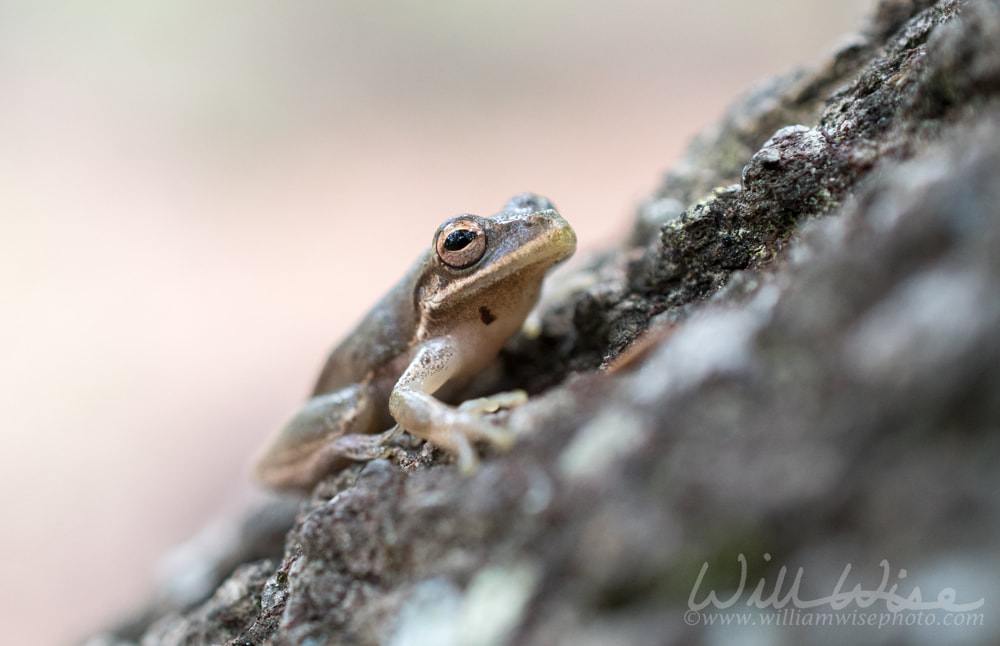 Macro photography of a Squirrel Tree Frog, Hyla squirella, climbing a tree in the Okefenokee Swamp National Wildlife Refuge, Georgia. Stephen C Foster Georgia State Park campground. Shot with 40mm macro lens. The squirrel tree frog Hyla squirella is a small species of tree frog found in the southeastern United States, from Texas to Virginia. An excerpt from Suwannee River, Strange Green Land by Cecile Hulse Matschat, 1938. "In the evening, or after a warm rain, the frog orchestra turns out in full force. Each species has its own peculiar song and pitch; and much of the really primitive folk music of Okefenokee is borrowed from its frogs and toads. The swampers call the frog music the Song of the Okefenokee and imitate it in their signal calls, and in the songs without words that they sing in long hours of poling down the runs." Cecile Matschat’s work, published in 1938 by the Literary Guild of America, is full of colorful stories of the Swampers that lived in the Okefenokee, exciting folklore encounters with bear, boar and cannibal alligators, as well as scientific descriptions of the flora and fauna of the great swamp. It a worthwhile purchase if you come across a used copy of this collectible out-of-print treasure of Okefenokee literature.
Barnaby was a unique looking mixed breed dog picked up stray by a Walton County Animal Control officer in Georgia on March 11, 2019. He was adopted into a new home on March 15, 2019!

Okefenokee Photography by William Wise. A nature photo journal exploration of Georgia's Okefenokee Swamp, the Land of Trembling Earth, one of the largest blackwater swamps in North America. The alligators, birds, snakes and wildlife of Okefenokee National Wildlife Refuge and Stephen C Foster State Park. -- "What a wildly wonderful world, God! You made it all, with Wisdom at Your side, made earth overflow with your wonderful creations." Psalms 104 The Message
On day three of our Okefenokee Swamp canoe trip, we came across a unique alligator. This big gator was missing the end of its upper snout. I suppose it could have been born with a deformity, but I guess it was injured in a fight with another gator. Its nostrils were missing and a good bit of scar tissue was built up along the edge. Several of the bottom teeth were missing as well.
American Alligator, Alligator mississippiensis
As it was sunning on a log, we pushed our canoe up for some closer photos. But as we crossed his comfort zone he retreated into the water. We saw it again later in the day as we were paddling back to our camp at the Stephen C Foster State Park campground.
As we paddled on about 2.4 miles upstream on Big Water lake, we came across another gator with some battle injuries. It too was missing a small portion of his upper lip. It wasn't until I was back home and editing my photos that I noticed its entire front right foot was missing!
 Okefenokee Photography by William Wise. A nature photo journal exploration of Georgia's Okefenokee Swamp, the Land of Trembling Earth, one of the largest blackwater swamps in North America. The alligators, birds, snakes and wildlife of Okefenokee National Wildlife Refuge and Stephen C Foster State Park. -- "What a wildly wonderful world, God! You made it all, with Wisdom at Your side, made earth overflow with your wonderful creations." Psalms 104 The Message From naturalist Francis Harper’s journal during his first visit to the Okefenokee Swamp; May 1912.

Okefenokee Photography by William Wise. A nature photo journal exploration of Georgia's Okefenokee Swamp, the Land of Trembling Earth, one of the largest blackwater swamps in North America. The alligators, birds, snakes and wildlife of Okefenokee National Wildlife Refuge and Stephen C Foster State Park. -- "What a wildly wonderful world, God! You made it all, with Wisdom at Your side, made earth overflow with your wonderful creations." Psalms 104 The Message
Close up photography of an Okefenokee Alligator making a big splash!

Okefenokee Photography by William Wise. A nature photo journal exploration of Georgia's Okefenokee Swamp, the Land of Trembling Earth, one of the largest blackwater swamps in North America. The alligators, birds, snakes and wildlife of Okefenokee National Wildlife Refuge and Stephen C Foster State Park. -- "What a wildly wonderful world, God! You made it all, with Wisdom at Your side, made earth overflow with your wonderful creations." Psalms 104 The Message
Why come to the Okefenokee Swamp? Gators galore! Other than a zoo, I haven't been to another spot where there are so many alligators and so many opportunities for close up photography in the wild. Alligators of all sizes lie everywhere about this majestic swamp!
Often, I return home with hundreds of usable alligator photos and footage. It is hard to decide what to delete, so I keep them all! Each gator has its own personality when you sit and watch them closely enough. 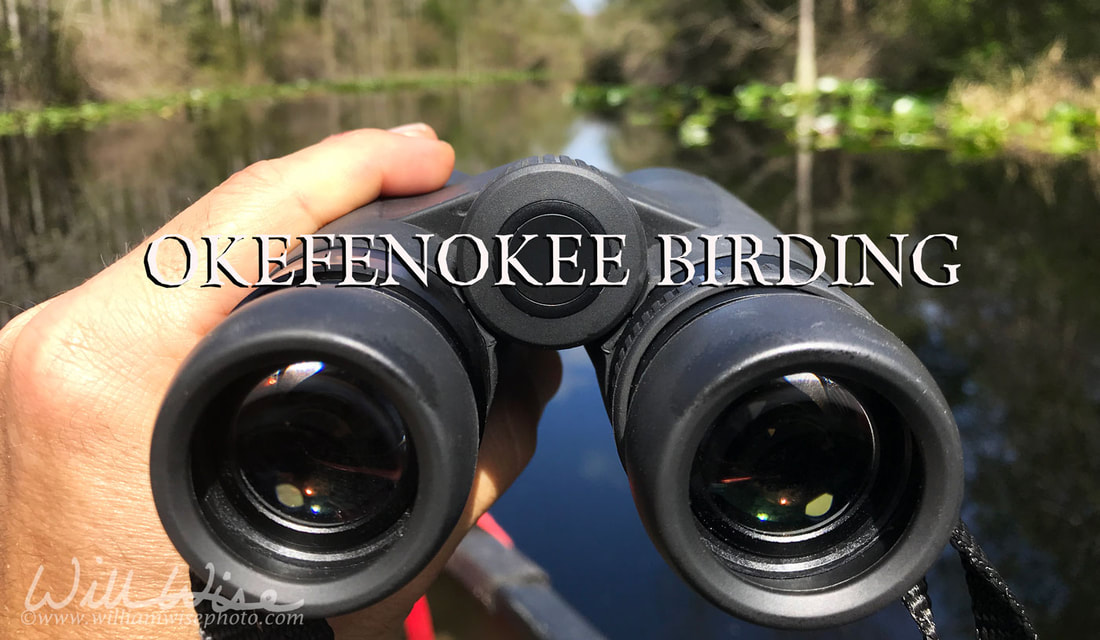 Okefenokee Photography by William Wise. A nature photo journal exploration of Georgia's Okefenokee Swamp, the Land of Trembling Earth, one of the largest blackwater swamps in North America. The alligators, birds, snakes and wildlife of Okefenokee National Wildlife Refuge and Stephen C Foster State Park. -- "What a wildly wonderful world, God! You made it all, with Wisdom at Your side, made earth overflow with your wonderful creations." Psalms 104 The Message 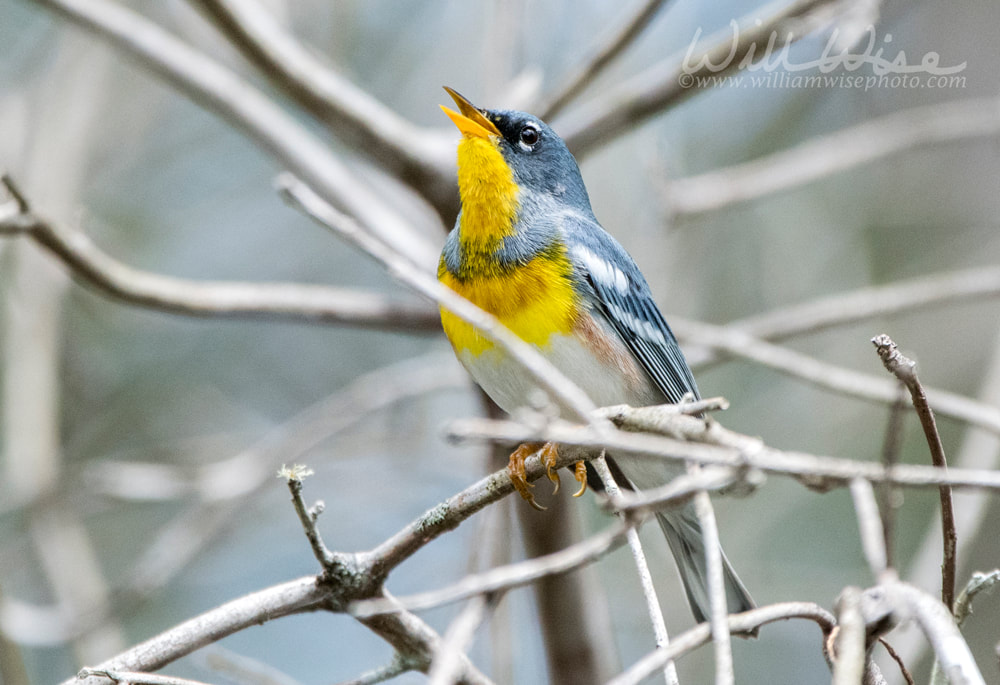 The Northern Parula was by far the most abundant and most vocal bird during our four day Okefenokee Trip. Once I learned which bird went with their distinct call, I realized they were everywhere! The northern parula, Setophaga americana, is a small warbler. It breeds in eastern North America. Okefenokee swamp National Wildlife Refuge between Minnie Lake and Big Water. March 14, 2019. Birds and reptiles! Large wading birds and huge reptiles of the order Crocodilia! That is what the Okefenokee is all about. It's a wildlife photographer's dream! 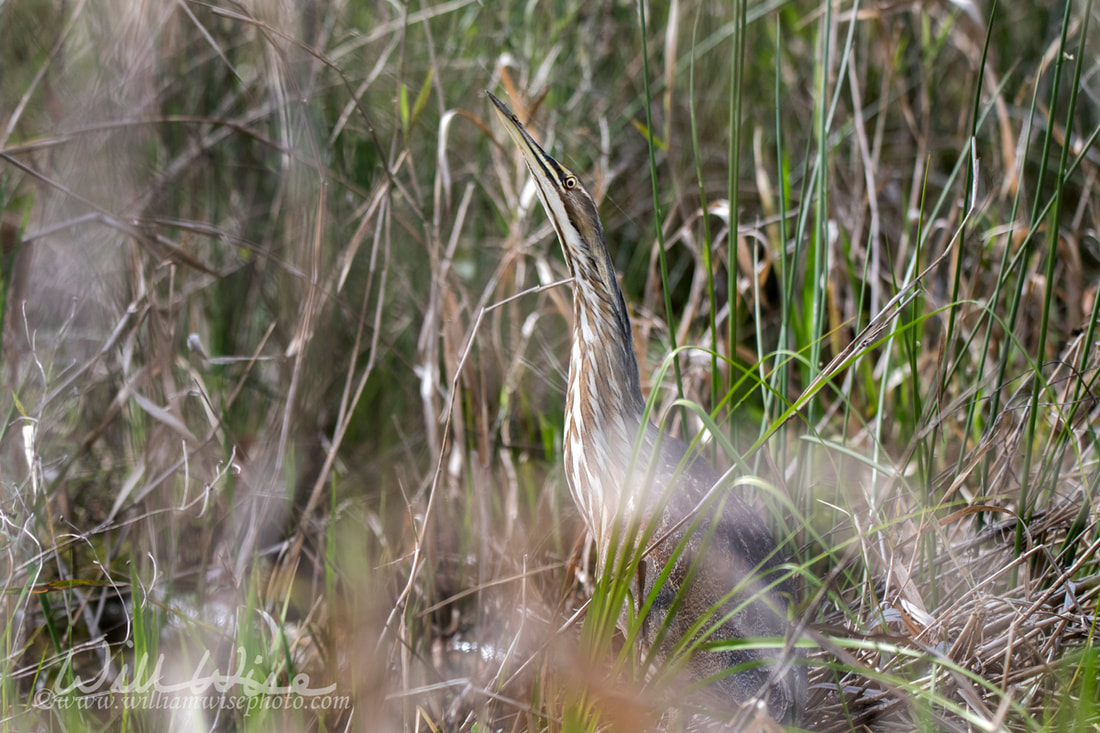 American Bittern camouflage in marsh grasses in the Okefenokee Swamp National Wildlife Refuge in Georgia, Stephen C Foster State Park. The American bittern Botaurus lentiginosus is a species of wading bird in the heron family.It is a well-camouflaged, solitary brown bird that unobtrusively inhabits marshes and the coarse vegetation at the edge of lakes and ponds. I was a bit surprised that the birding didn't seem as good this year as has it had been in the past. In 2017, there were Little Blue Herons, both white and blue, Great Egrets and Double Crested Cormorants everywhere. I recall eBird telling me to double check my lists as the counts seemed too high! So perhaps this year was normal, and 2017 was higher than normal. Nevertheless, we did encounter several birds throughout our trip.  New for me on this year's paddling excursion was my new pair of Zeiss Conquest HD binoculars that I bought from Redstart Birding last month. I clipped the strap to my canoe seat with a carabiner just in case. At times it was a pain to swap back and forth between my camera and the binoculars, but the clarity and the field of view with the Zeiss optics was unbeatable! It was much easier to locate the birds and wildlife with the binoculars, switch and fire away with the Nikon D500, and then go back to the Zeiss once the shot was captured. I enjoyed watching the quirky behavior of the Parulas through the binoculars. |
Categories
All
Archives
November 2024
|
|
All content is ©williamwisephoto.com. Please don't steal images. My images are available at dreamstime.com. Stock sales go into the shelter photography program.
|
In December 1993 I came to know the Designer and Creator of this wonderful planet and its creatures: Jesus Christ.
|
Donations help support the animal shelter adoption photography equipment and adoption website hosting and domain fees. Thanks for your support!
|
